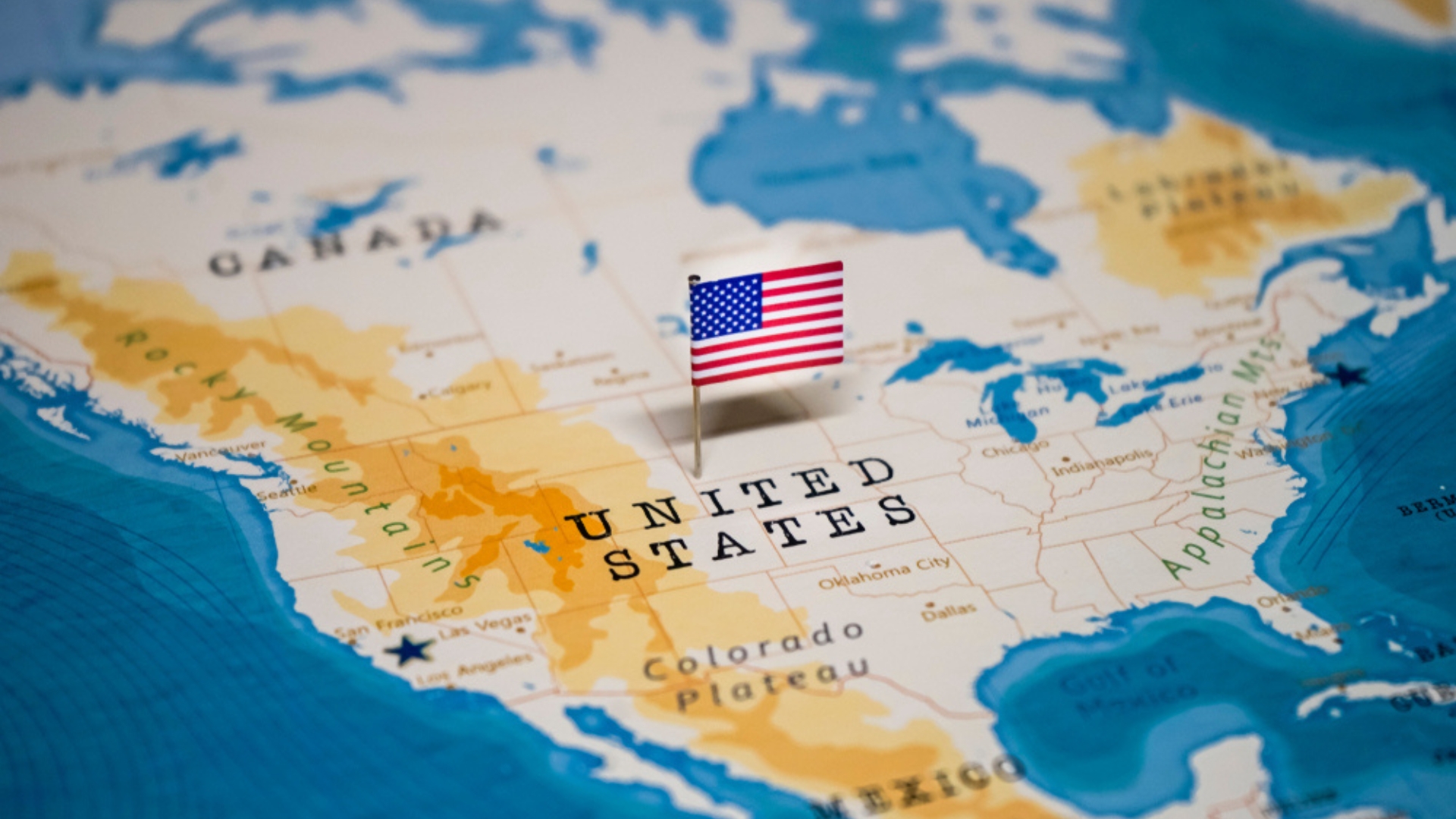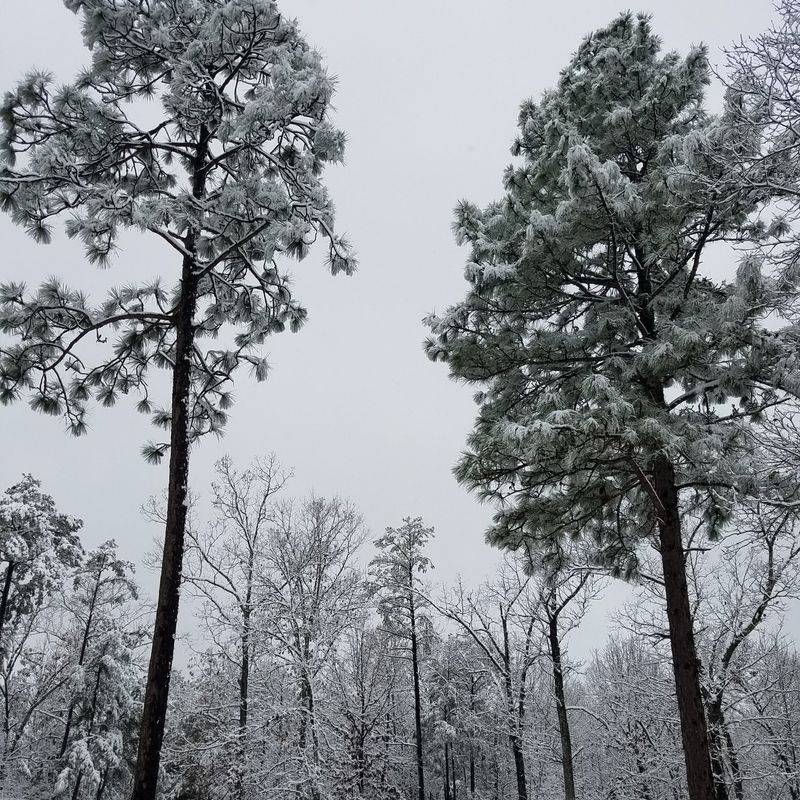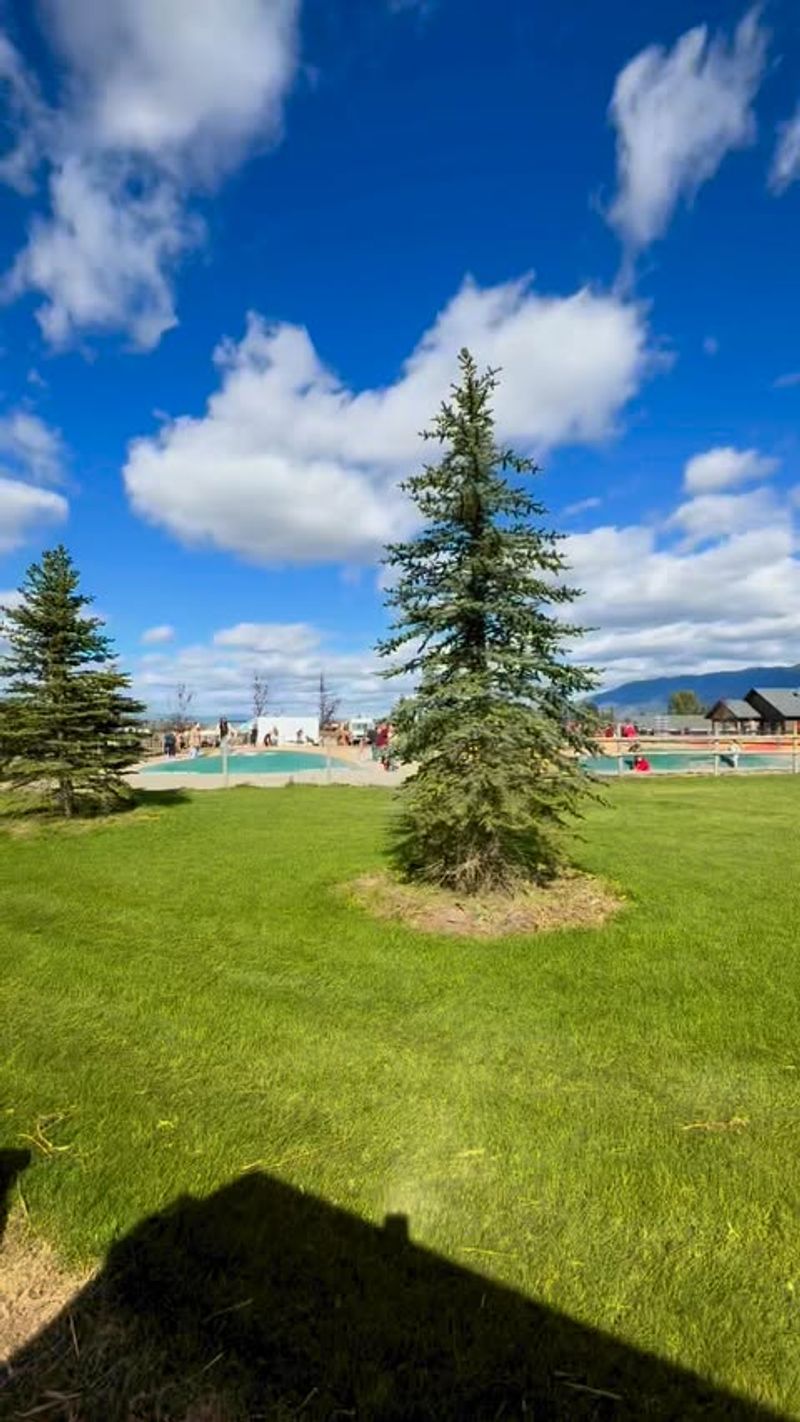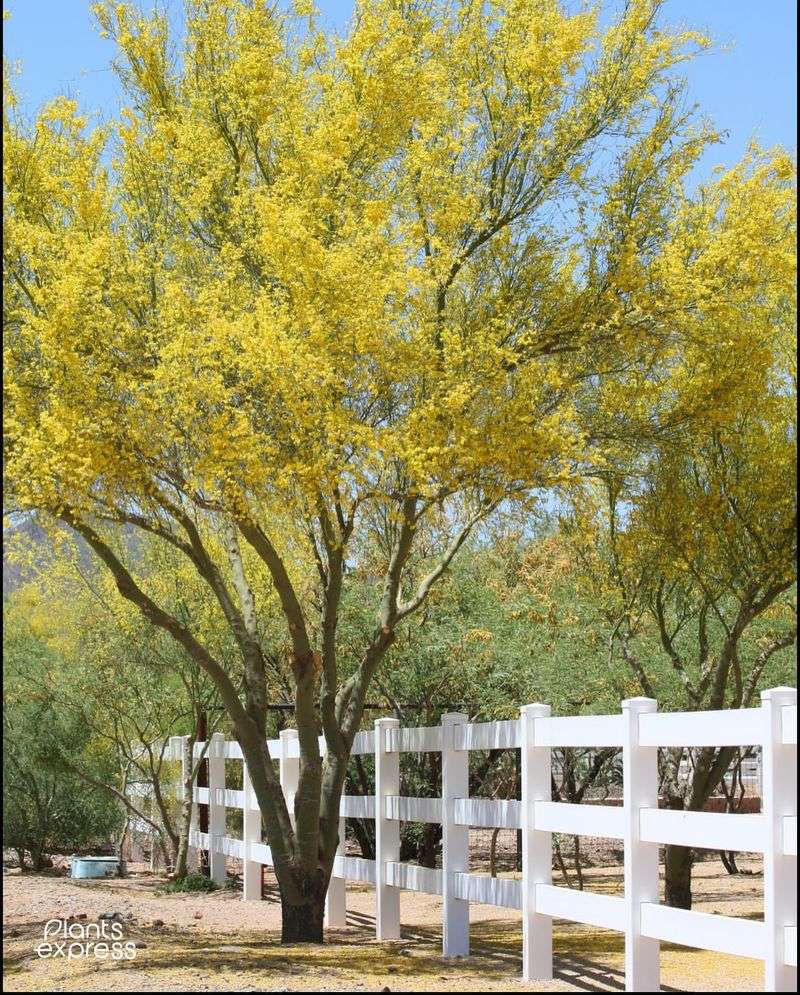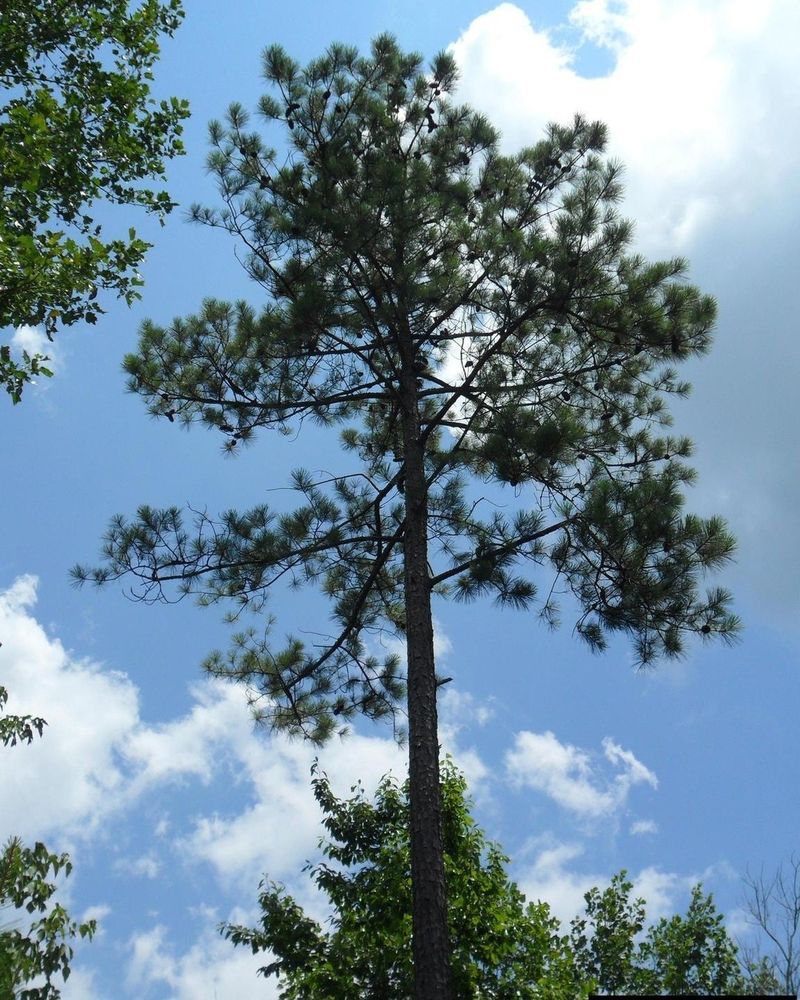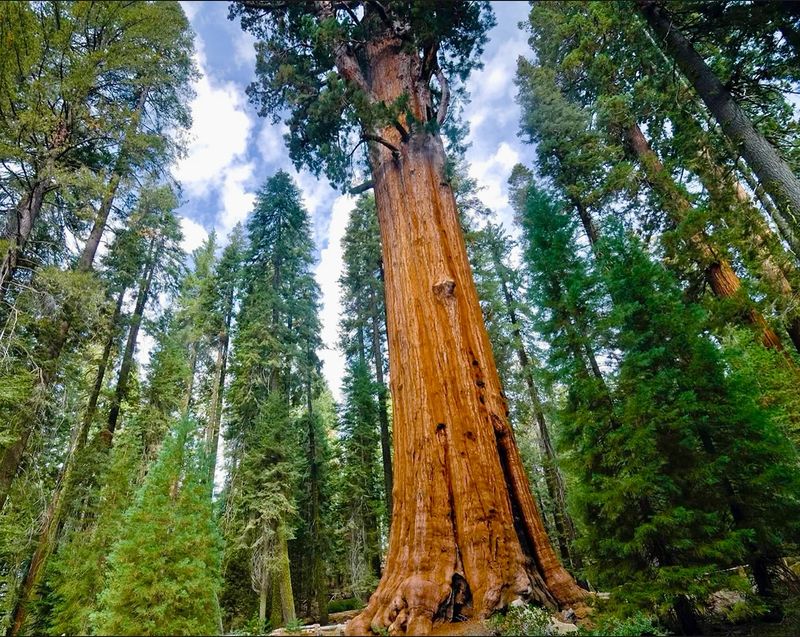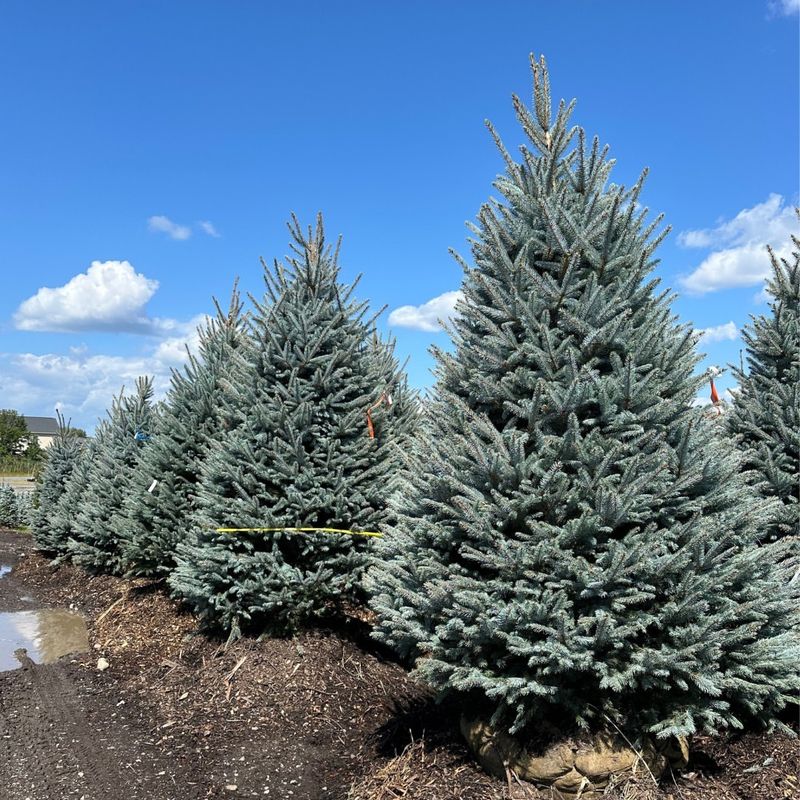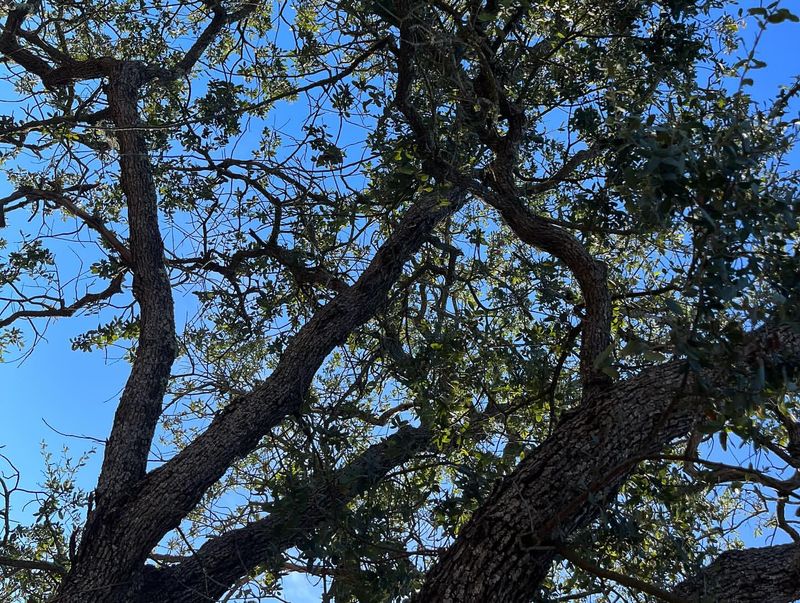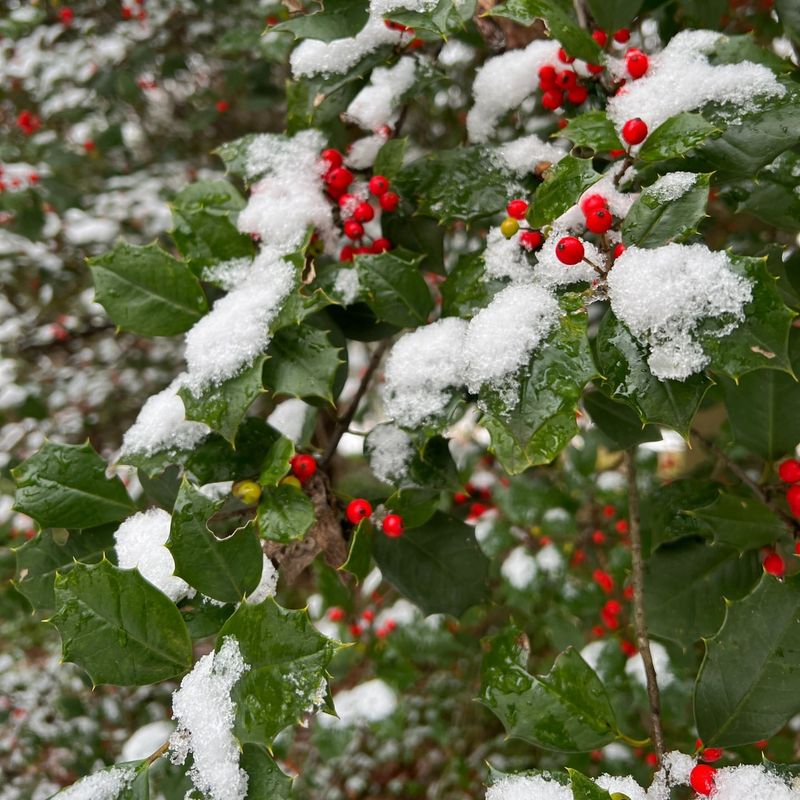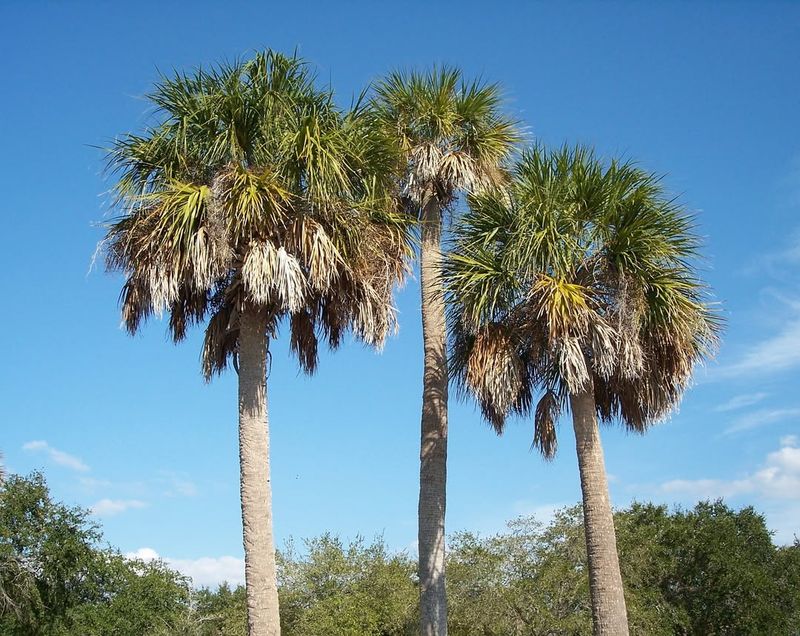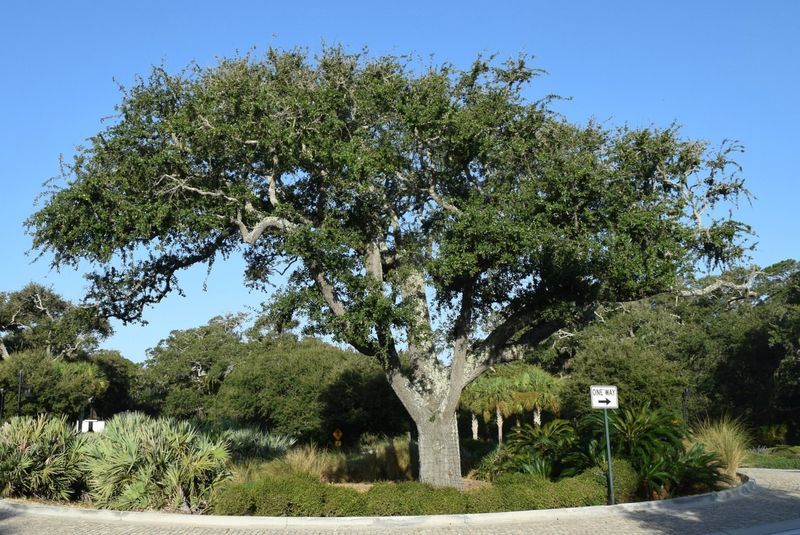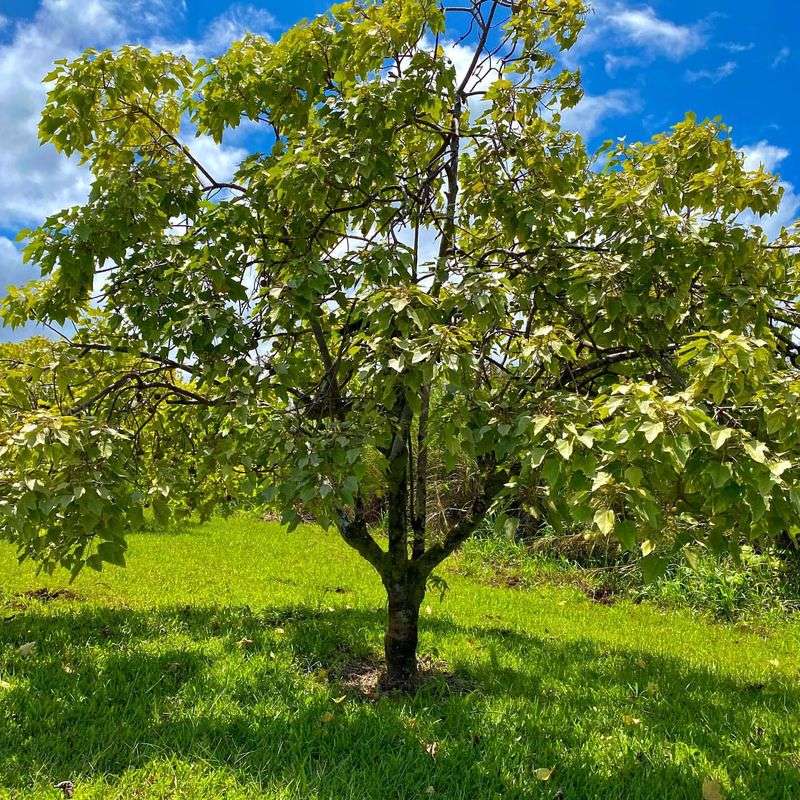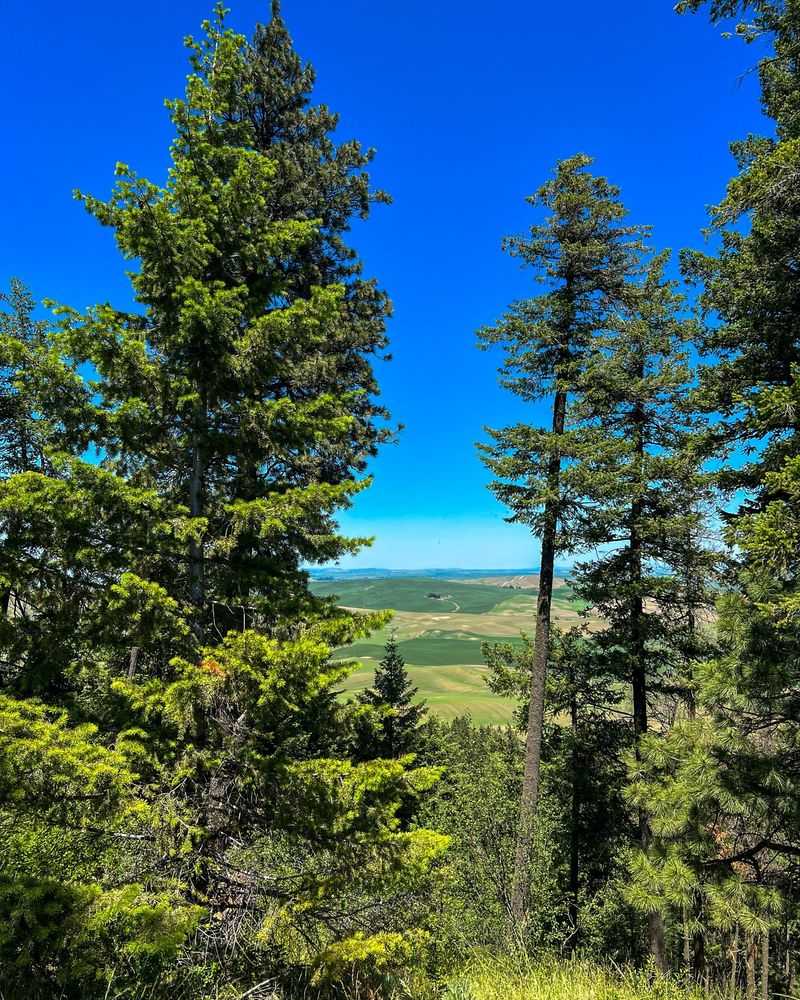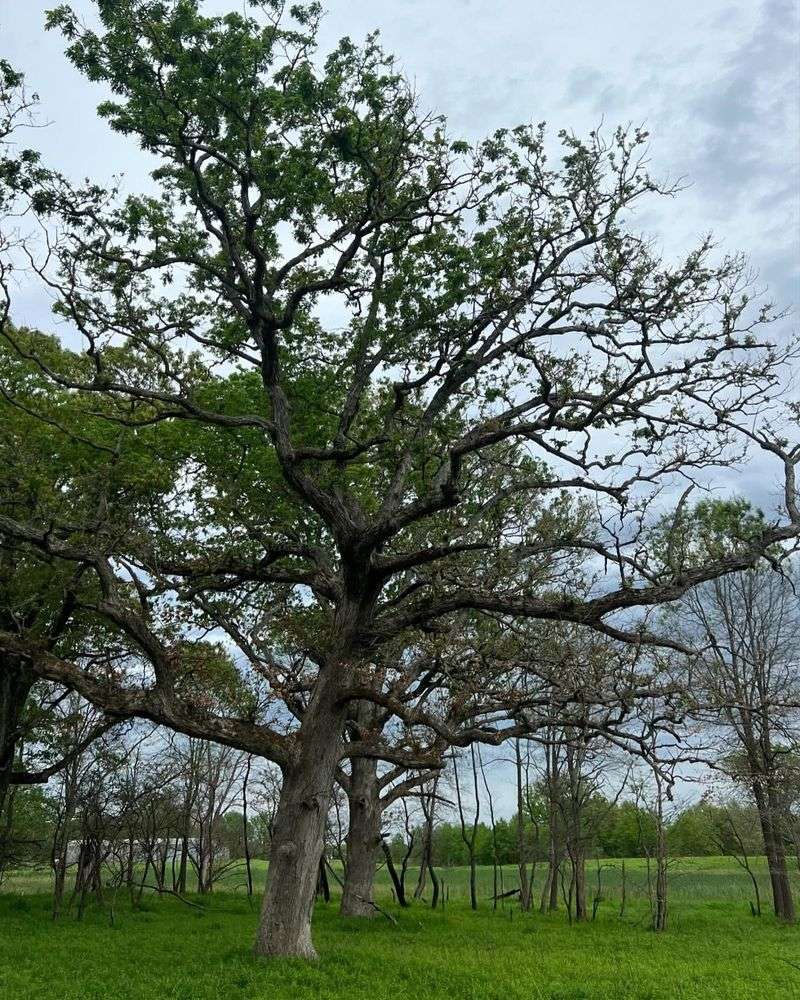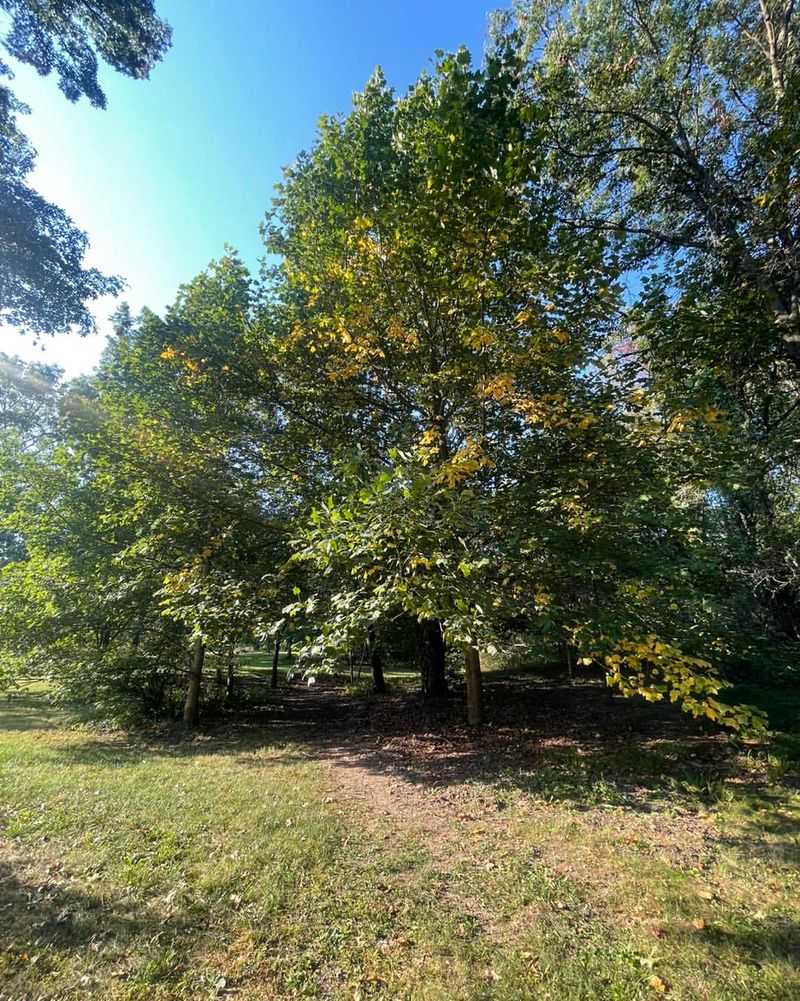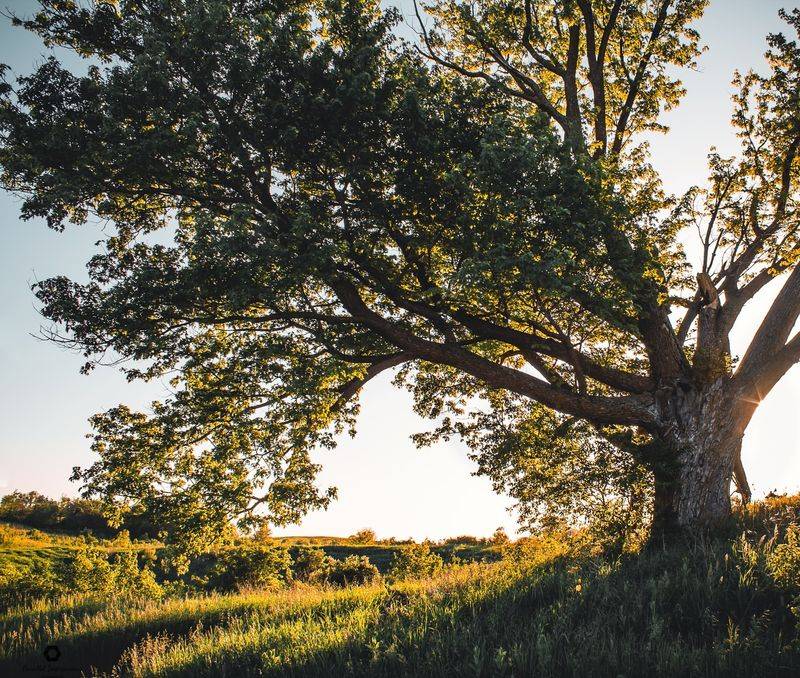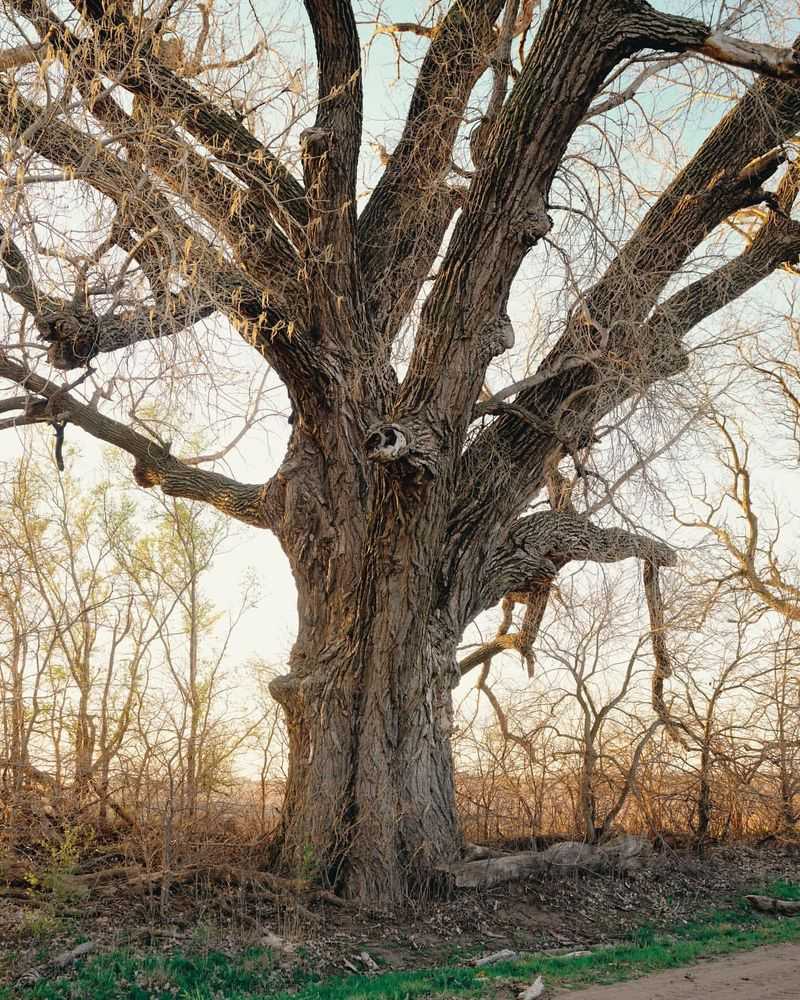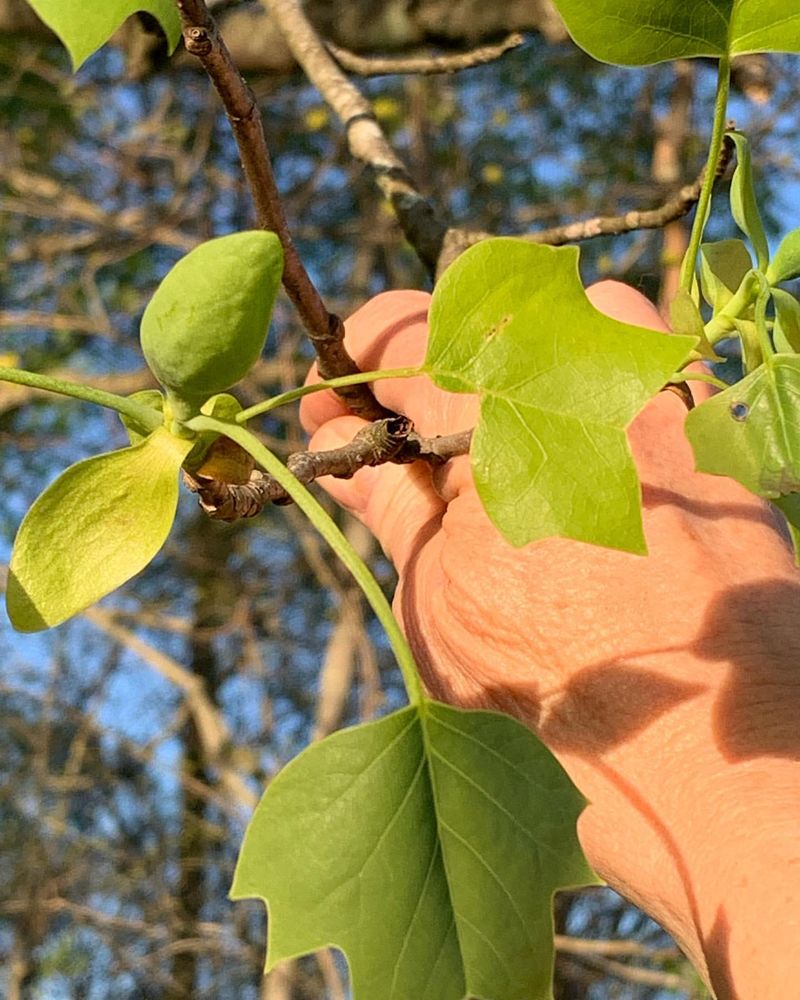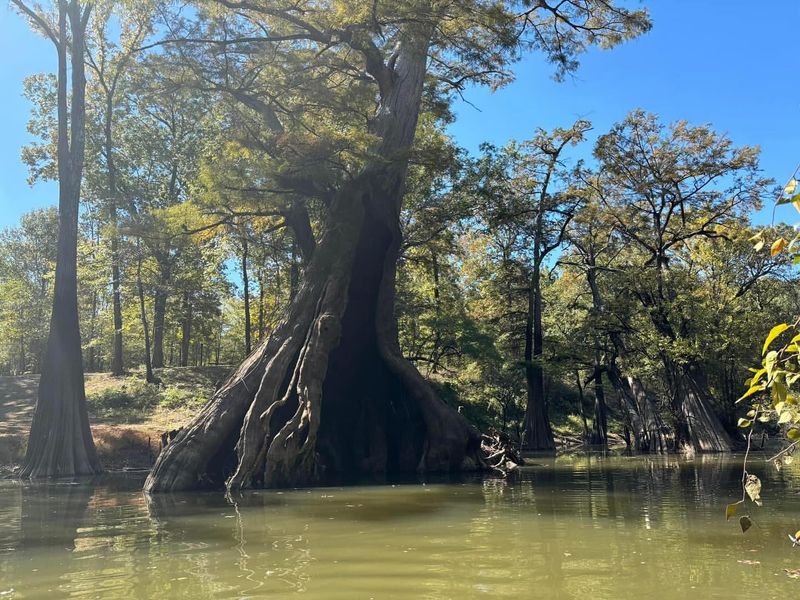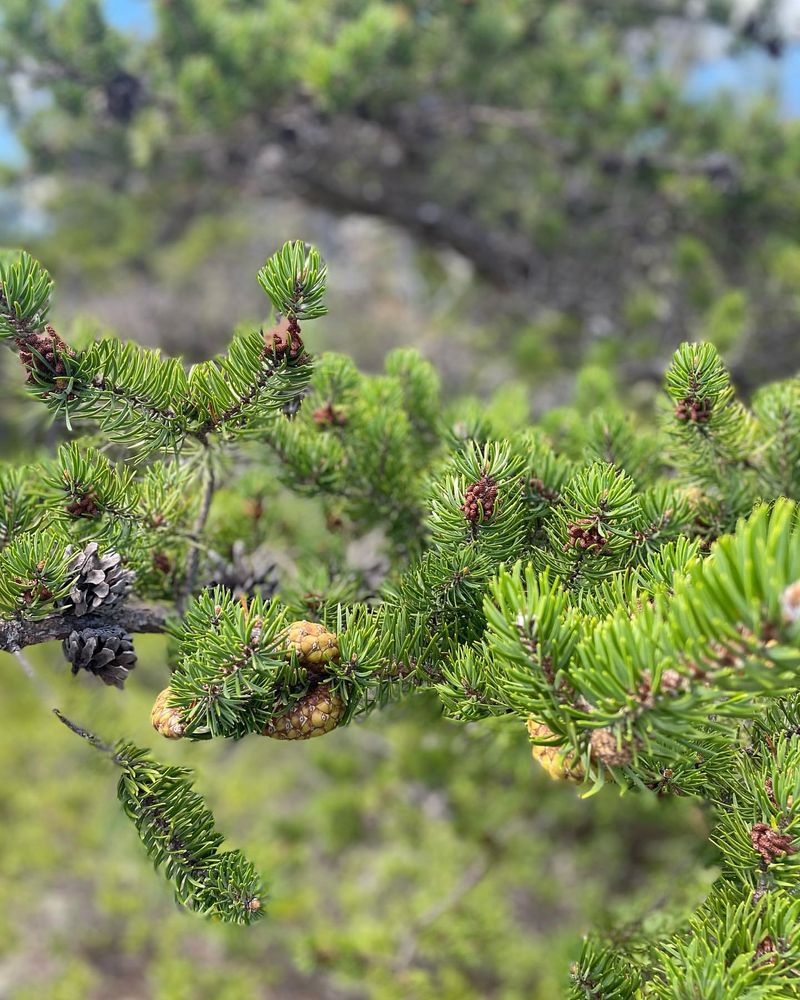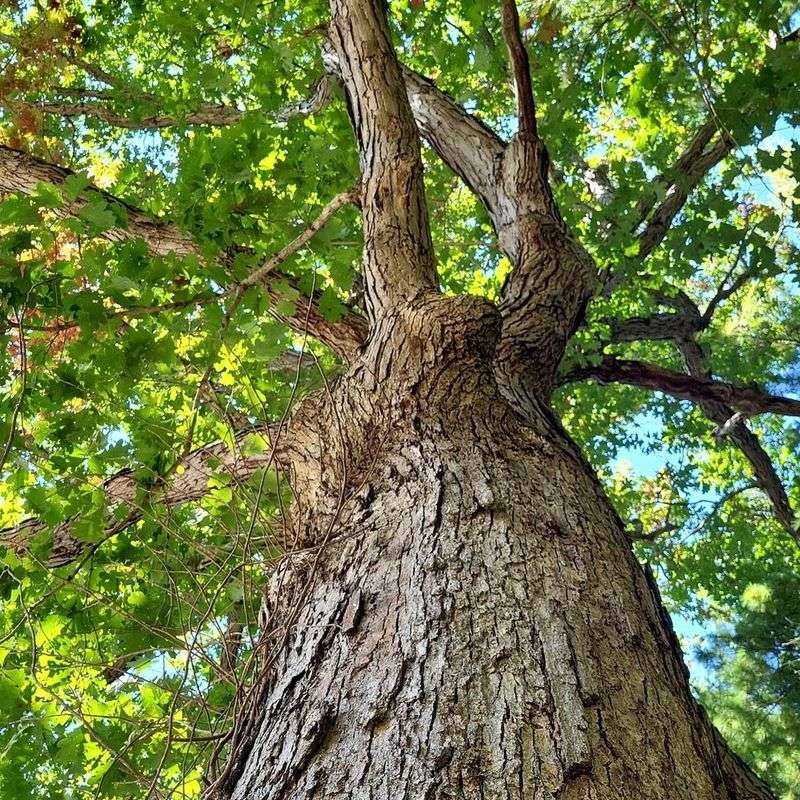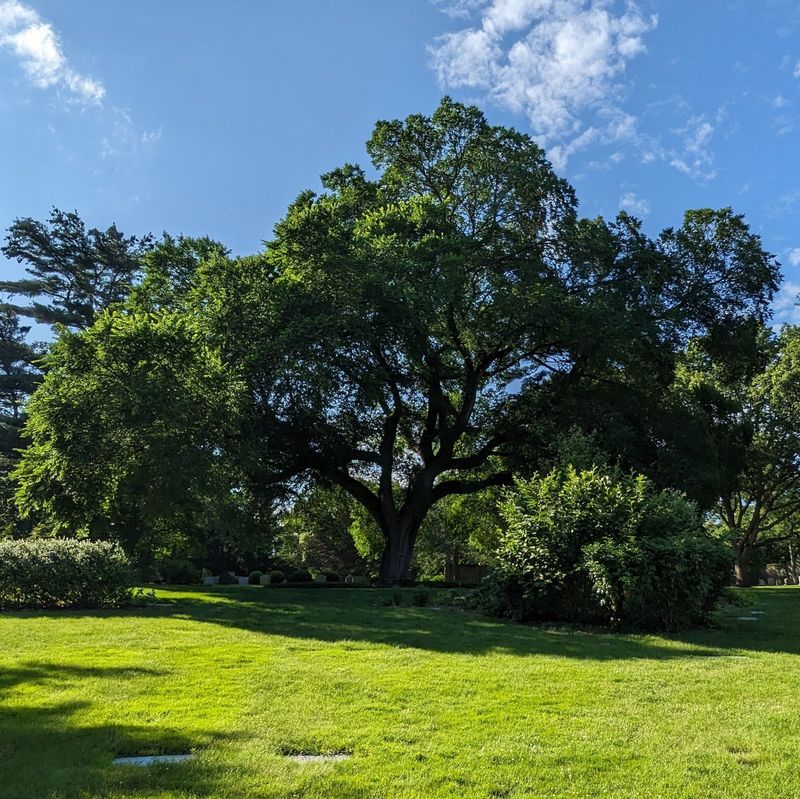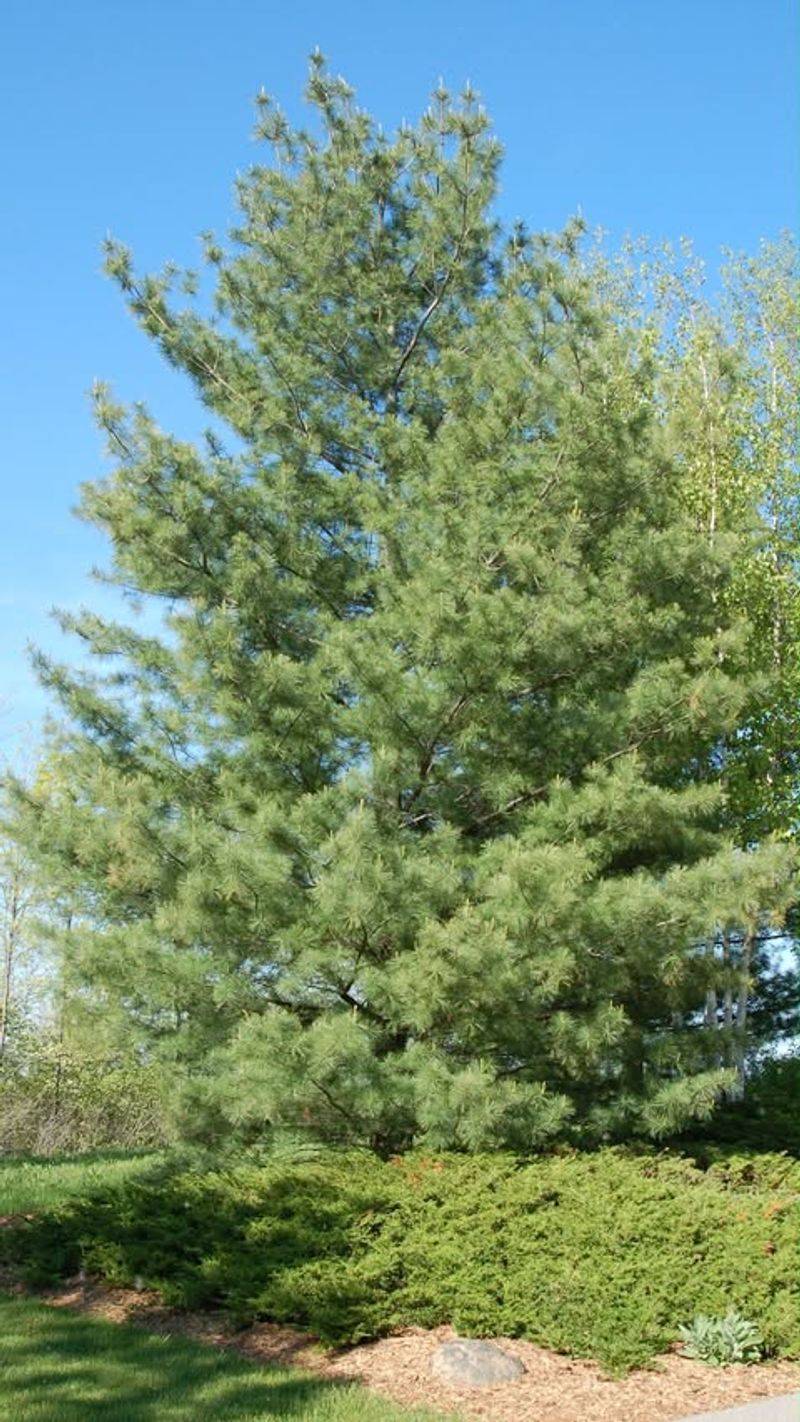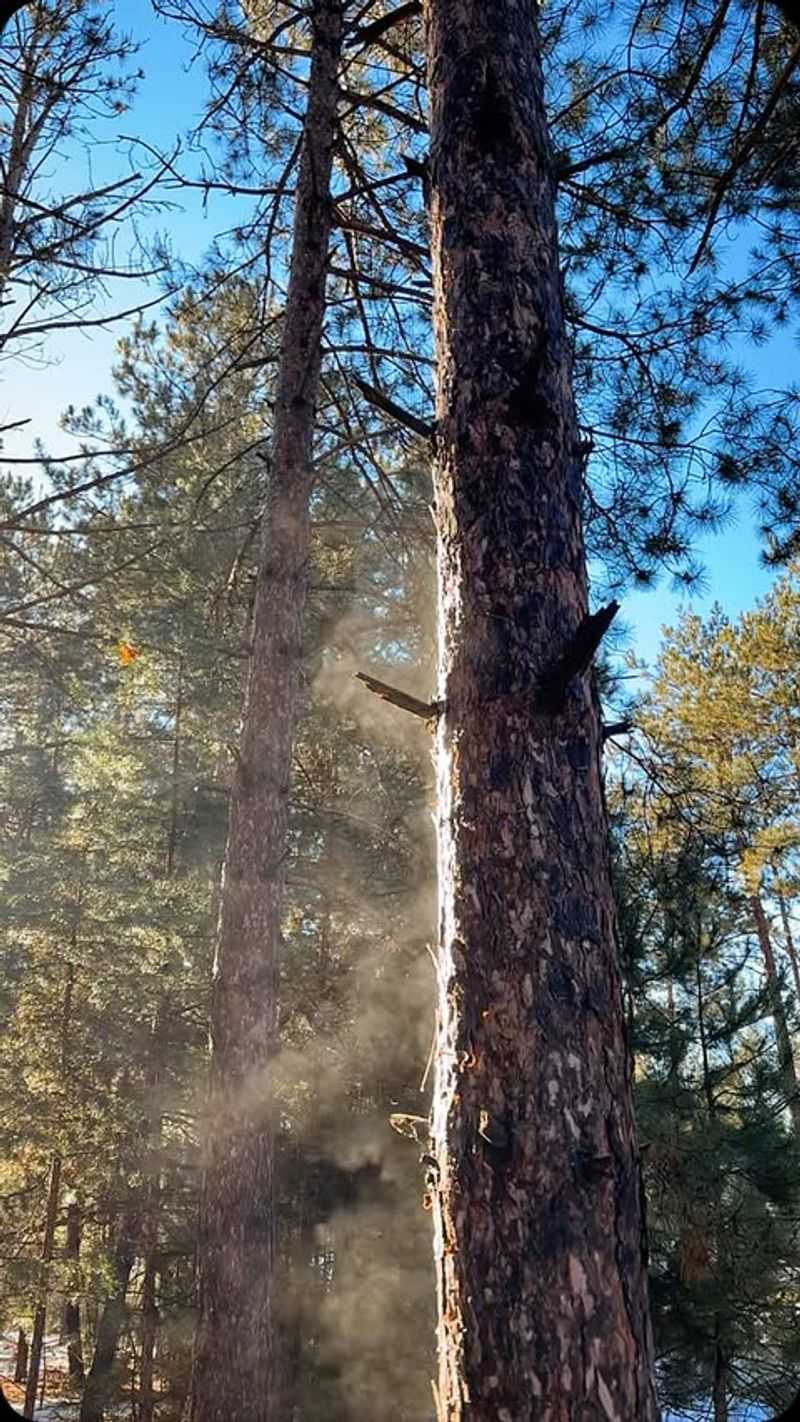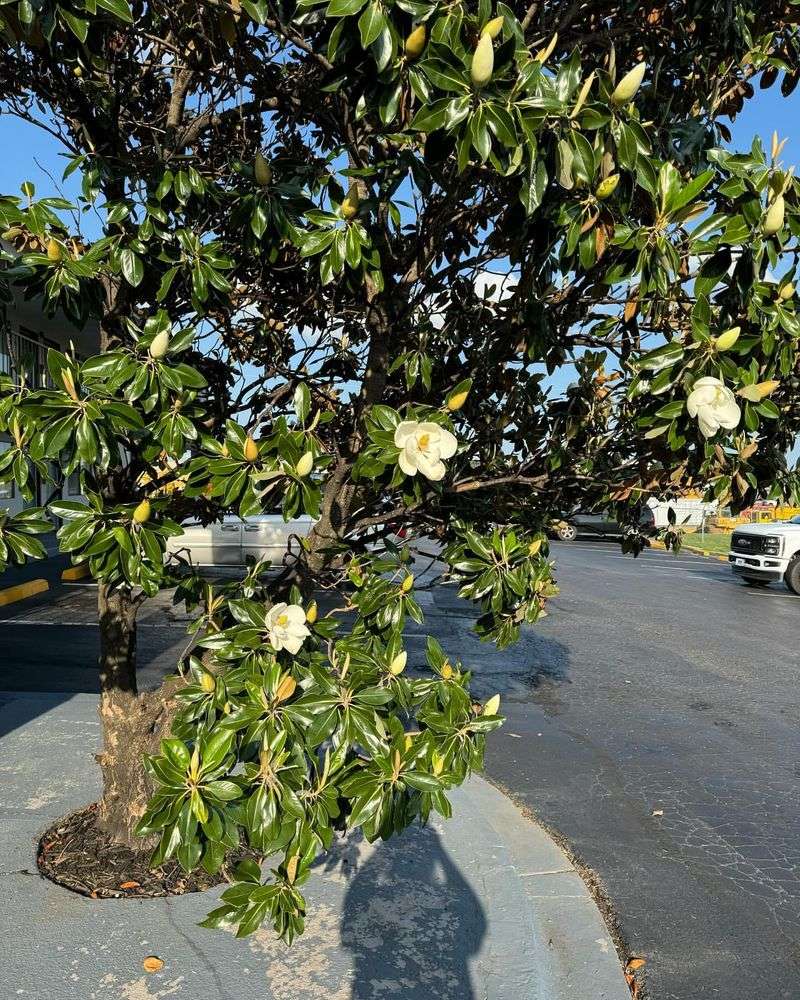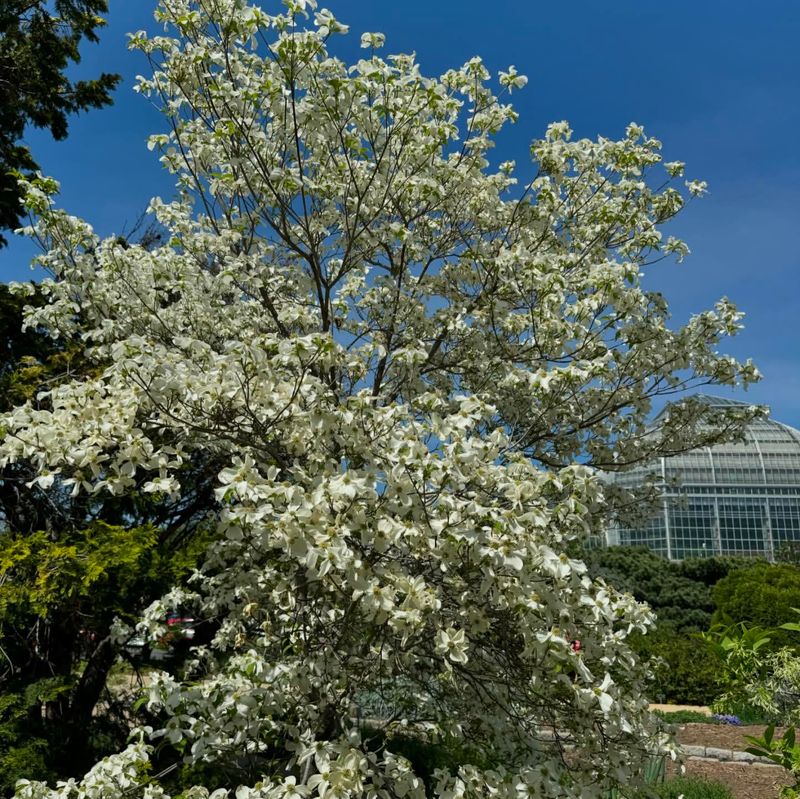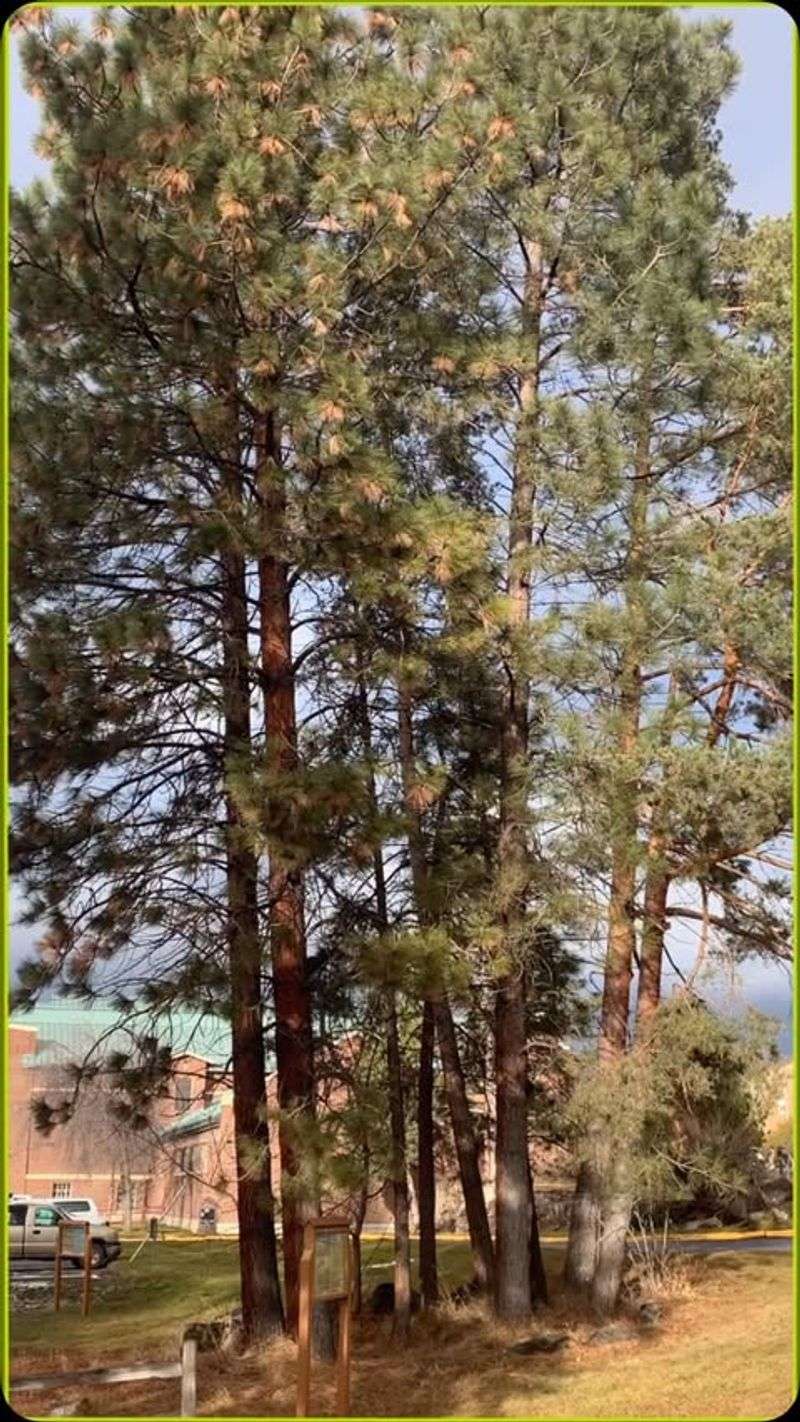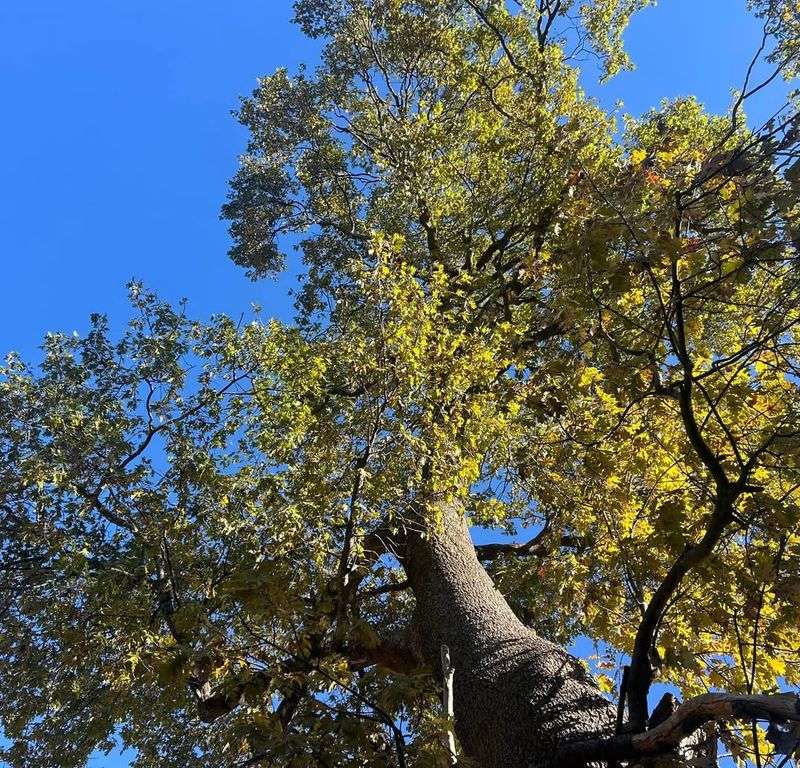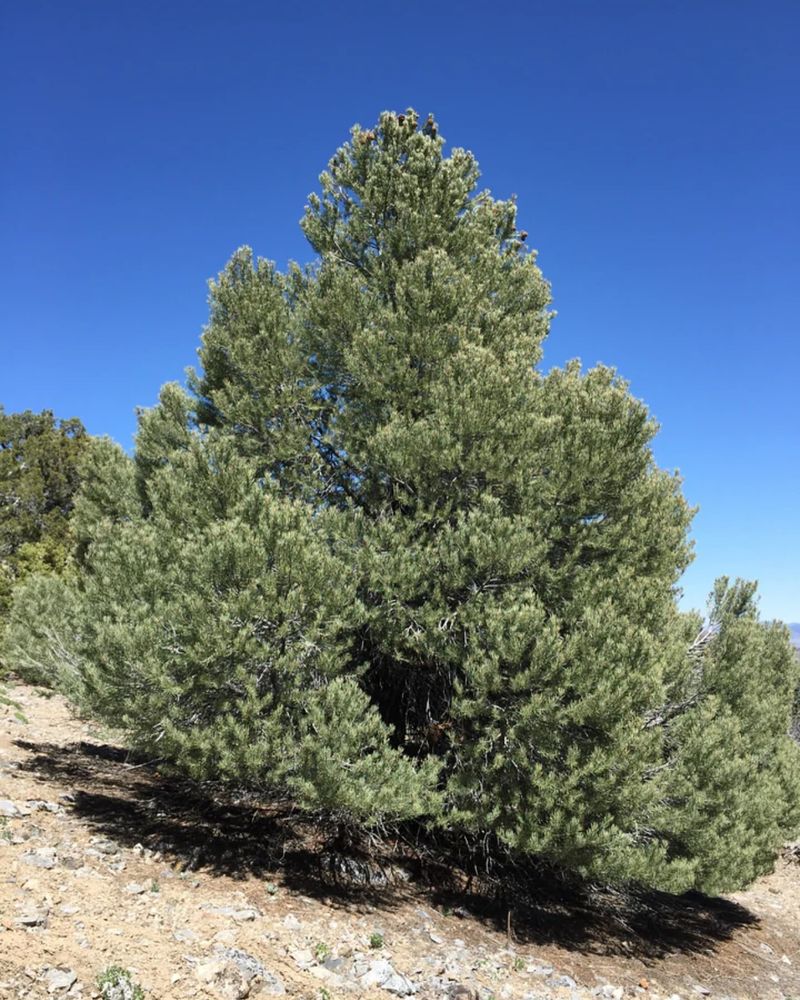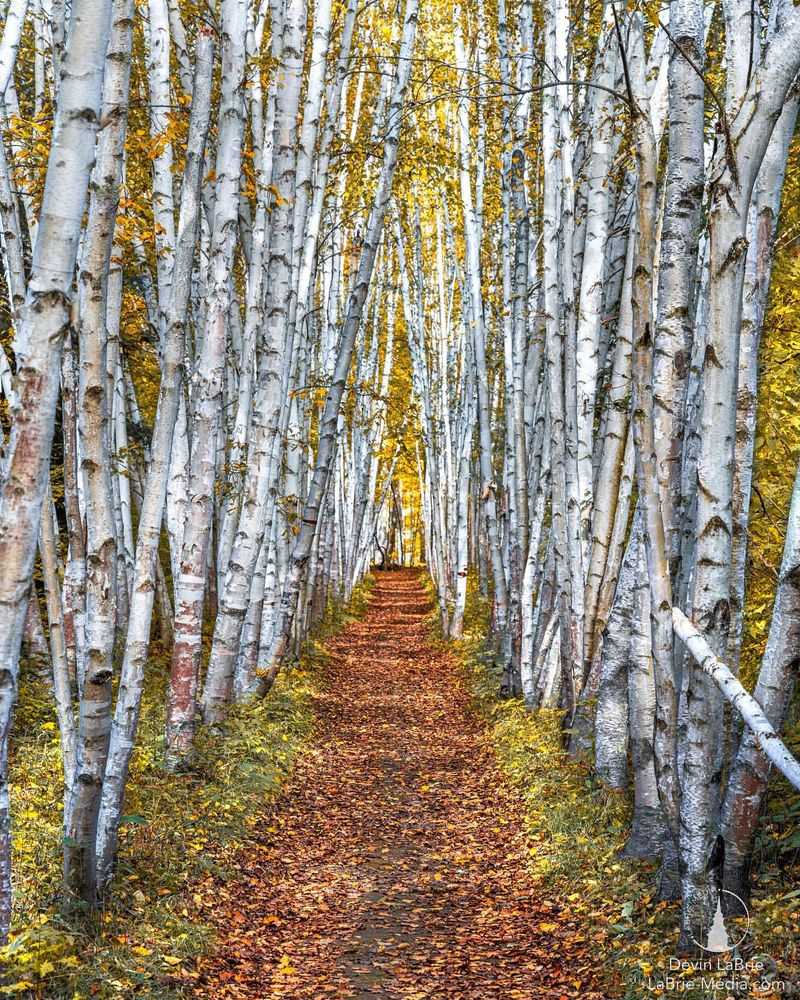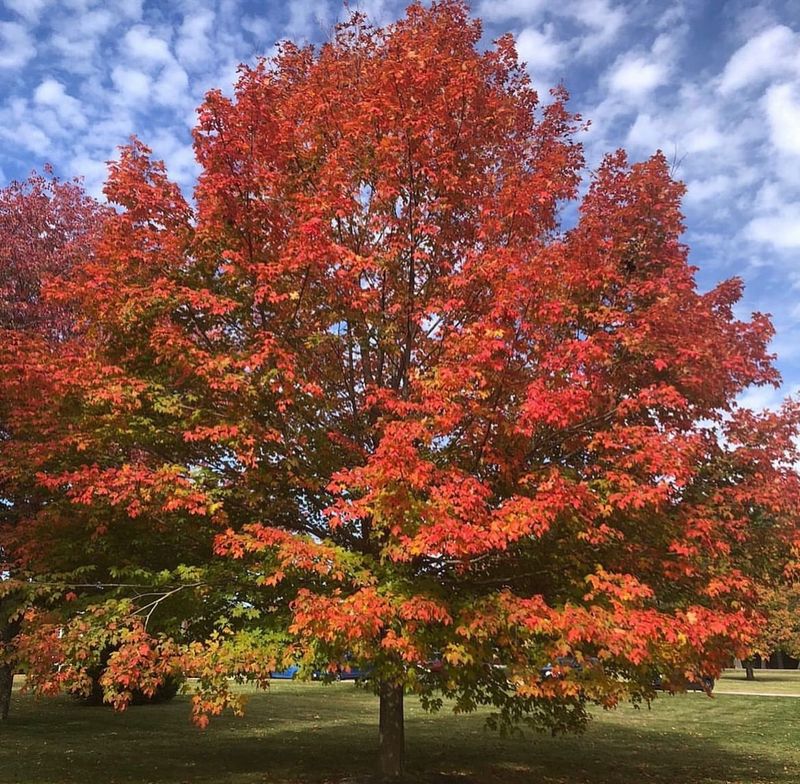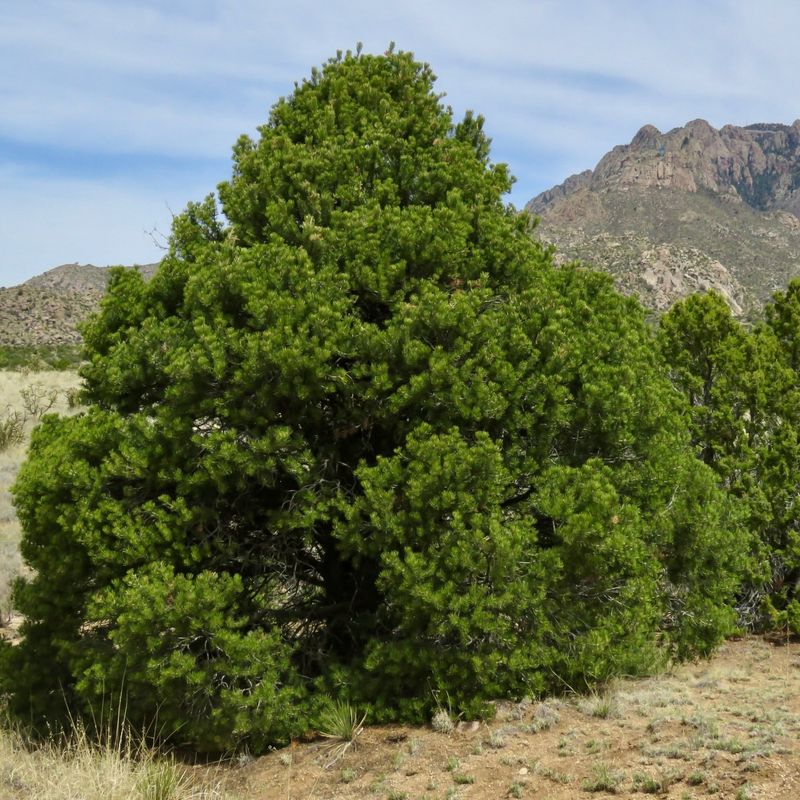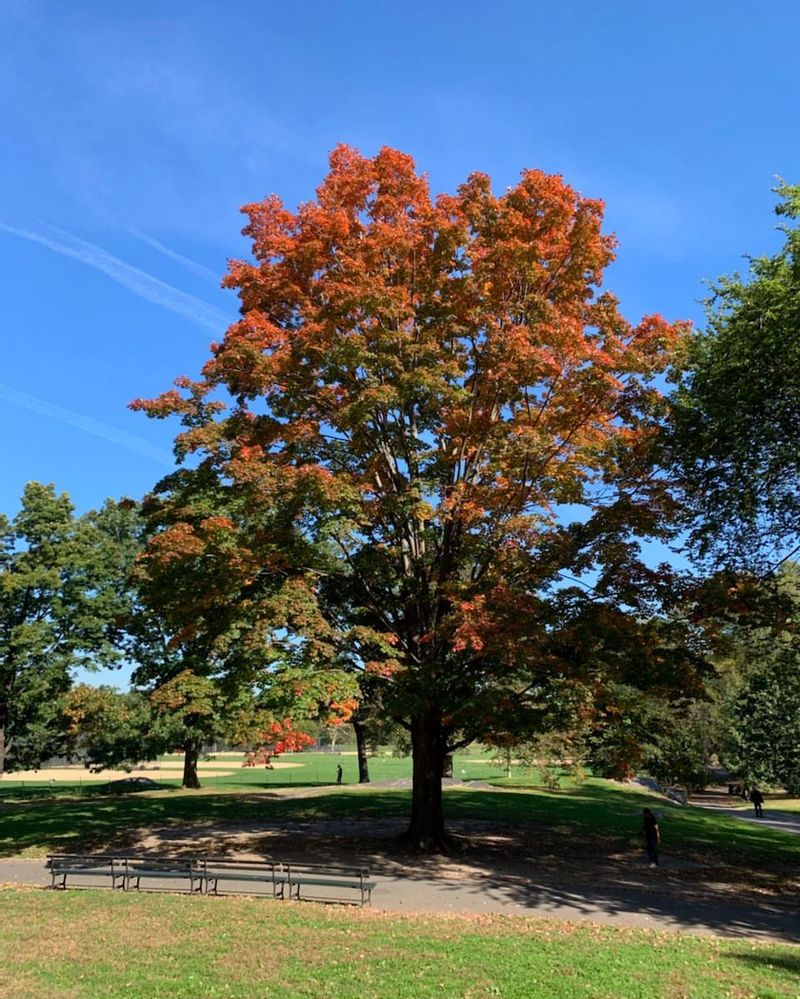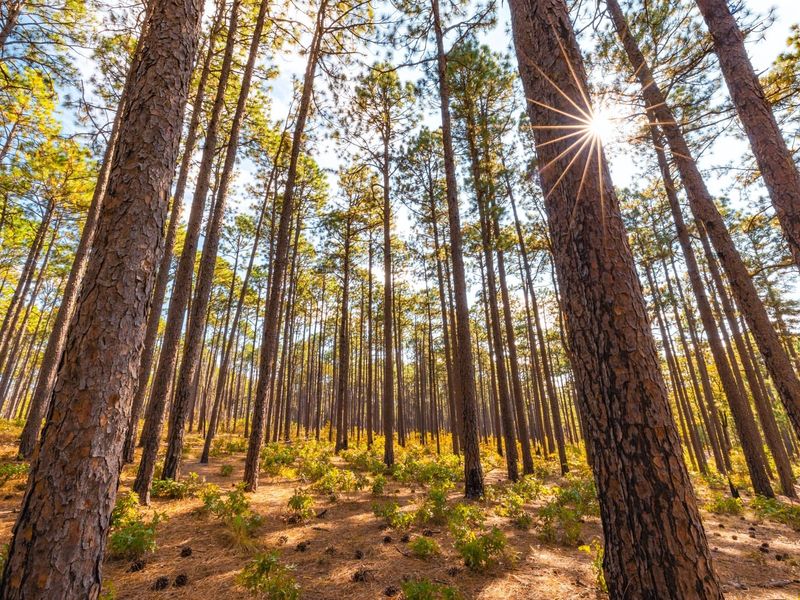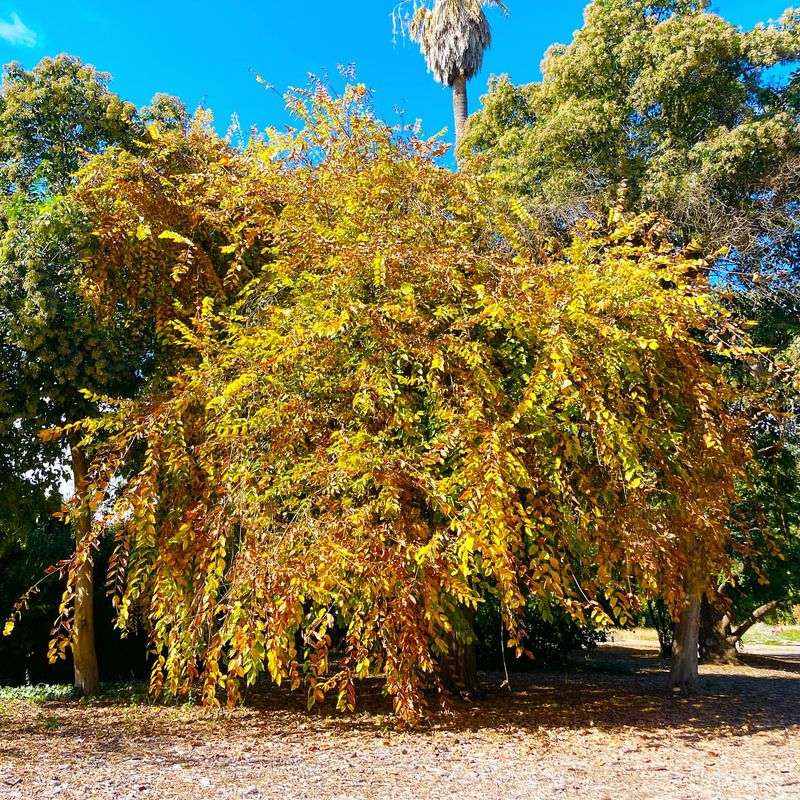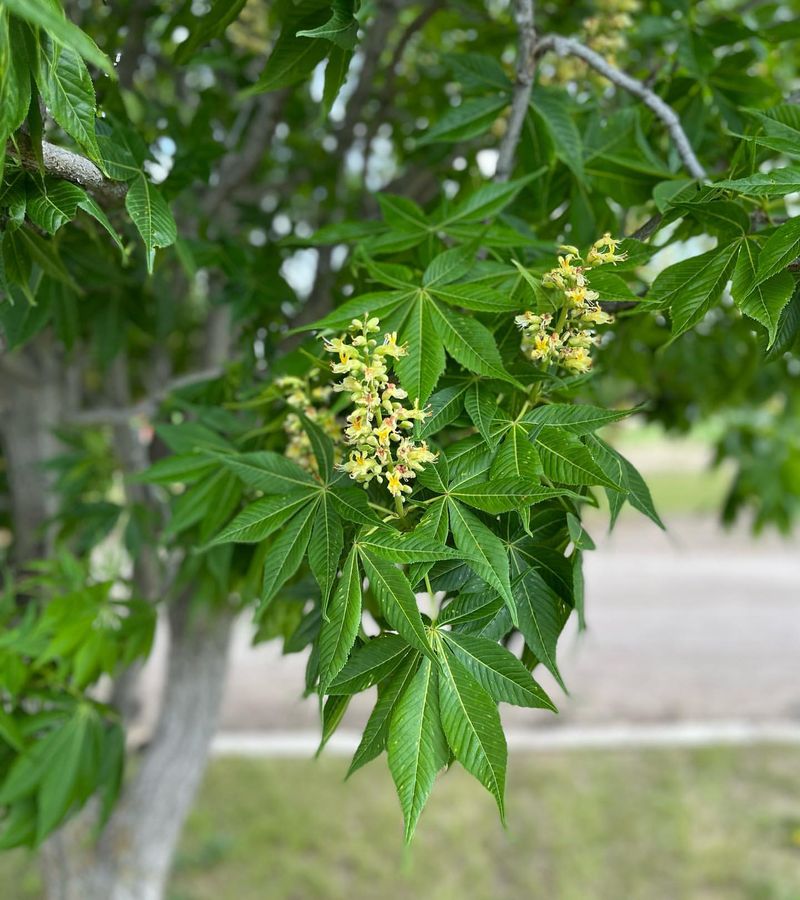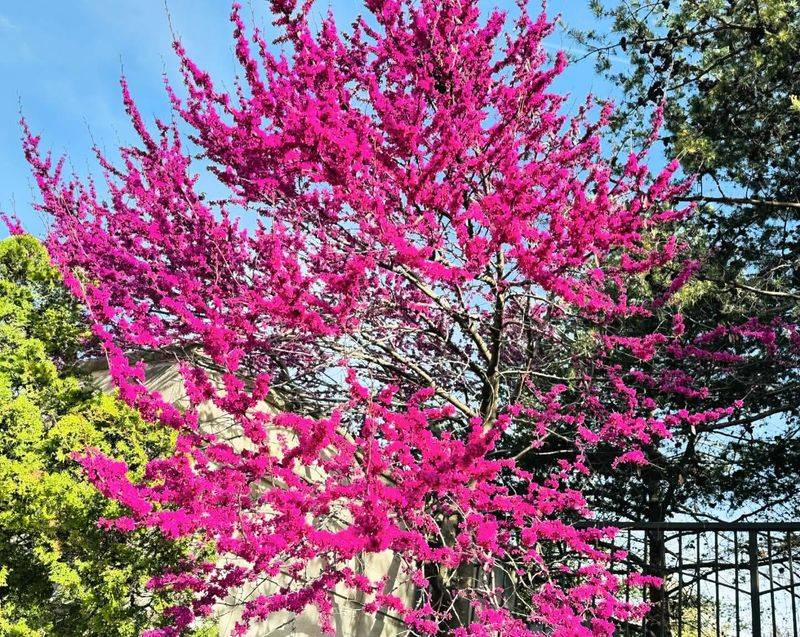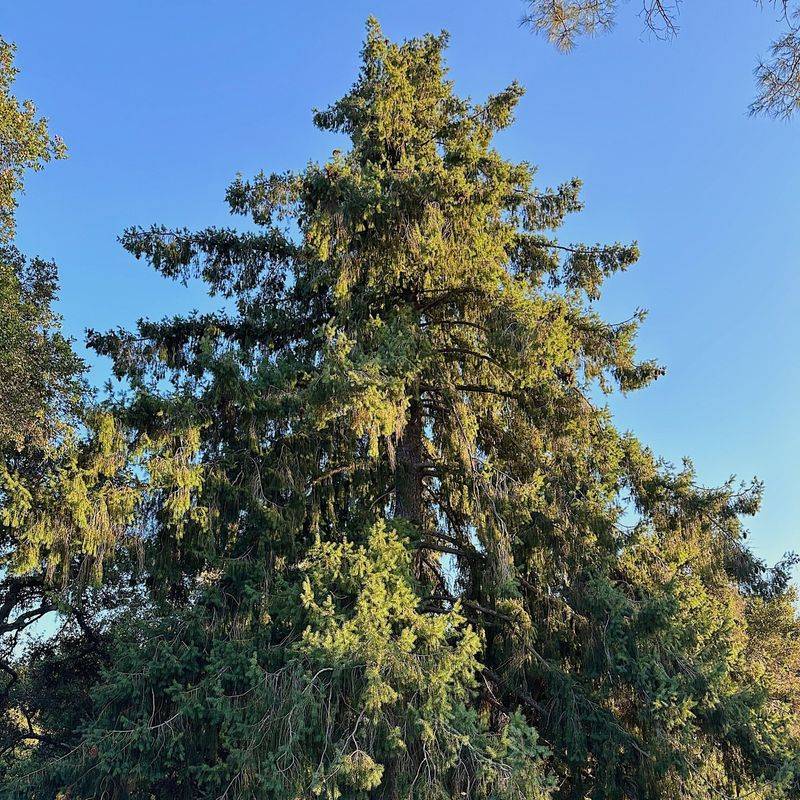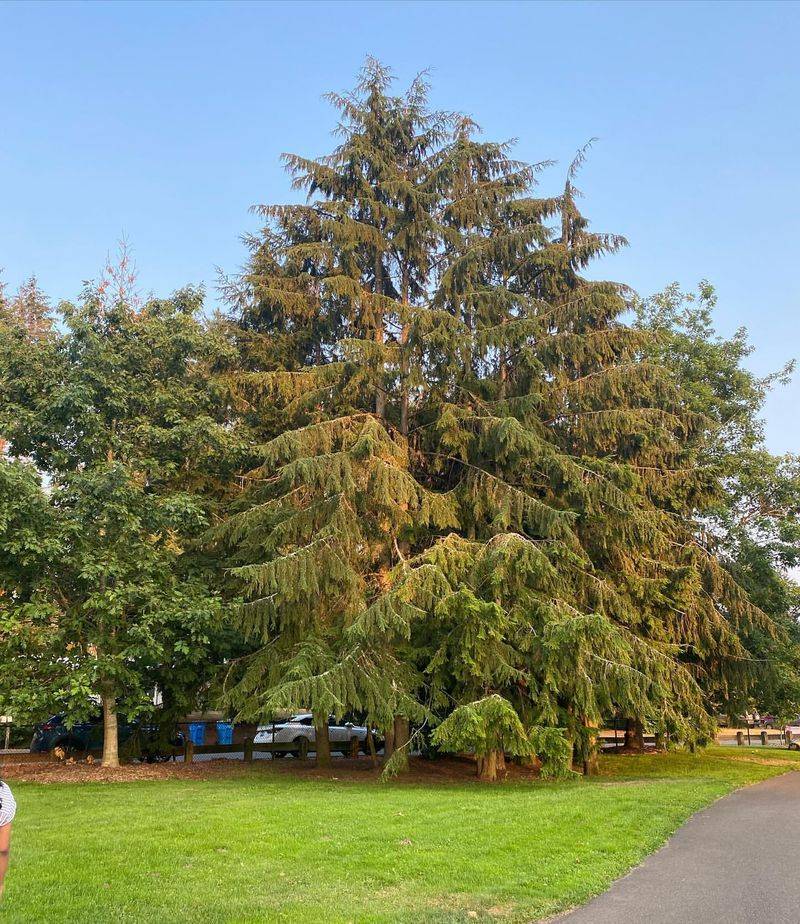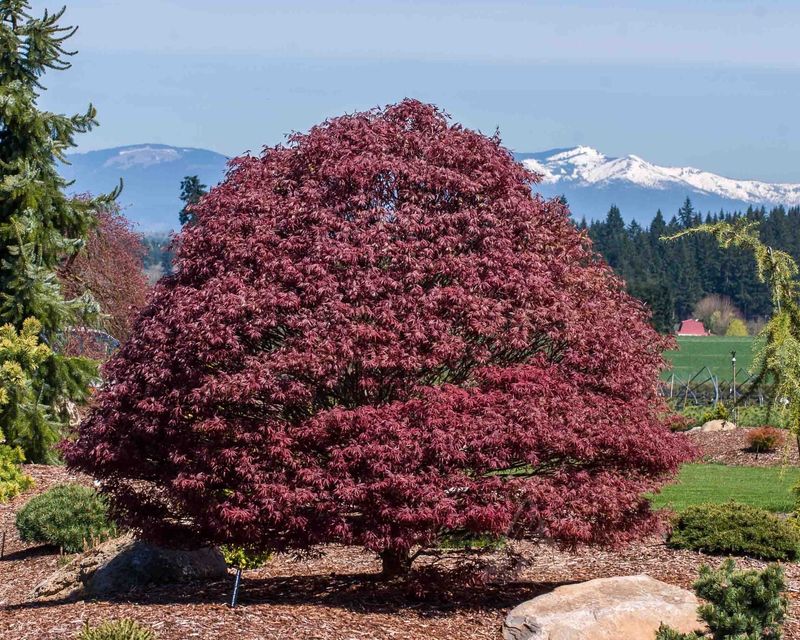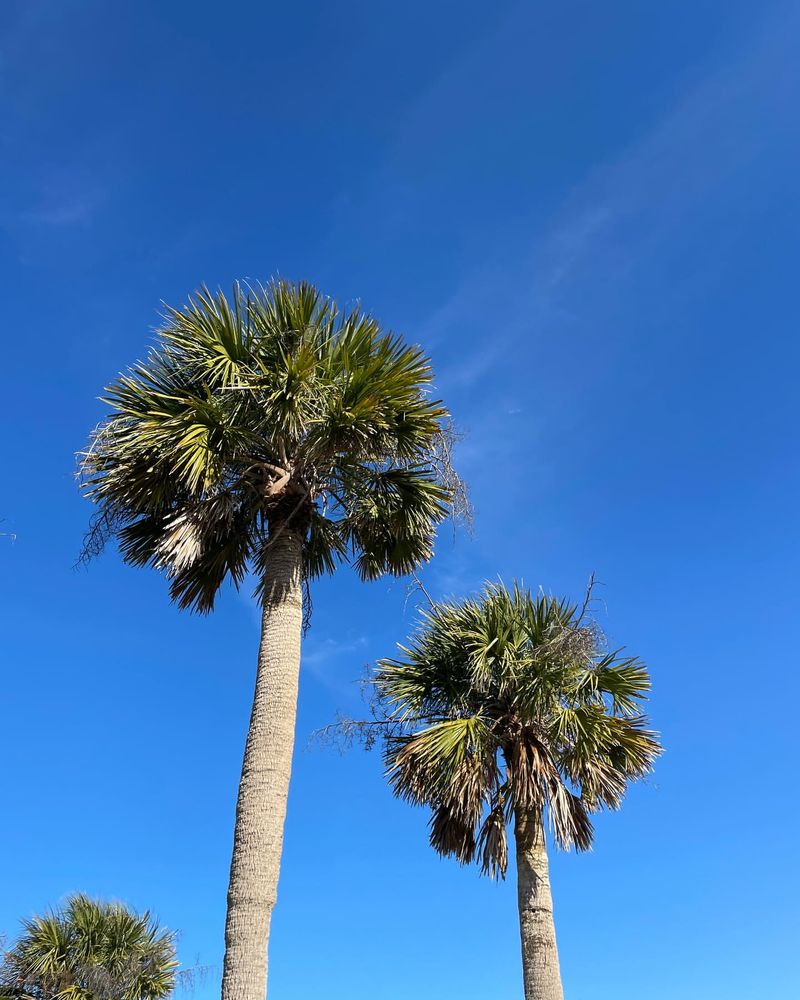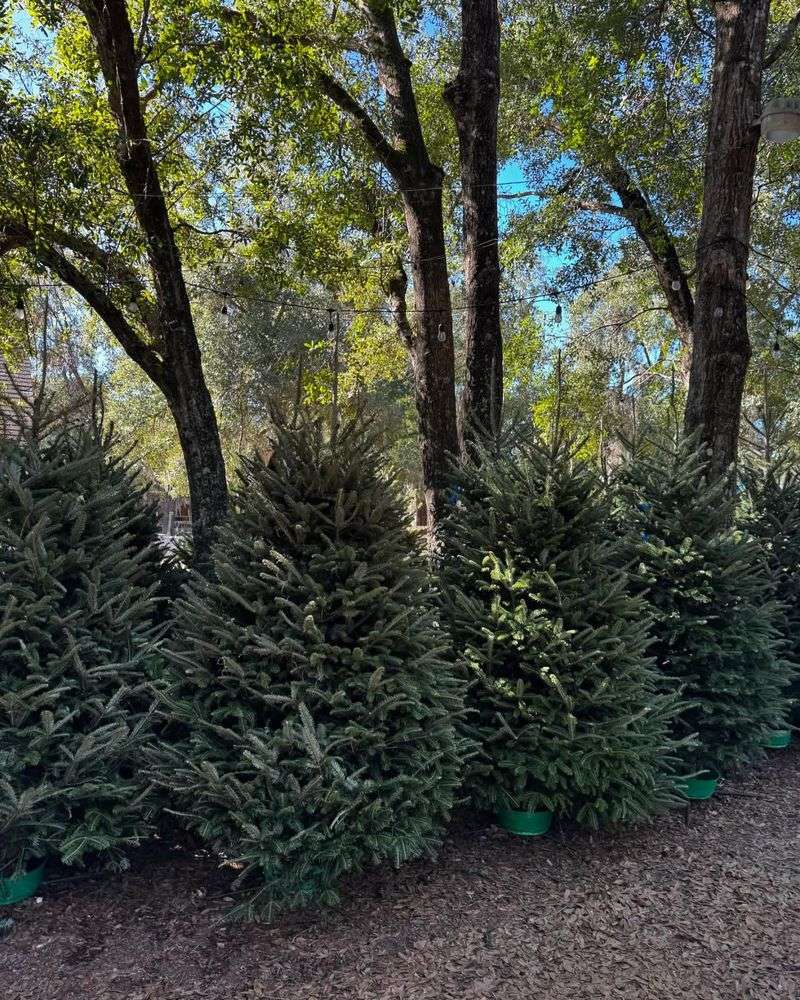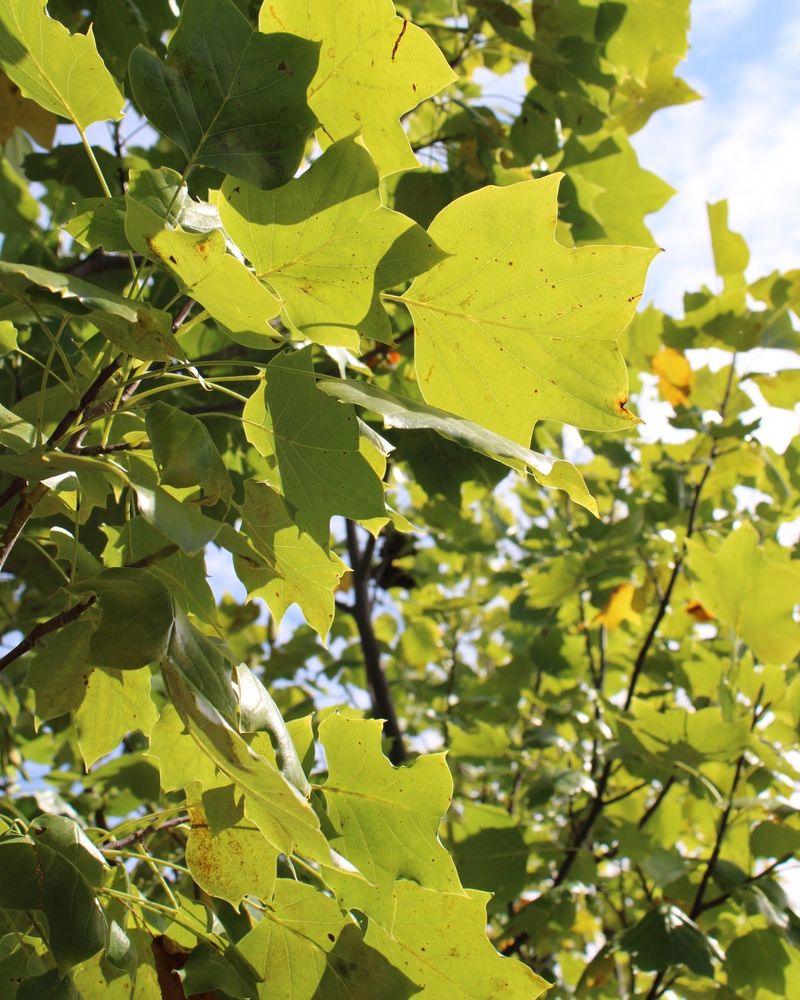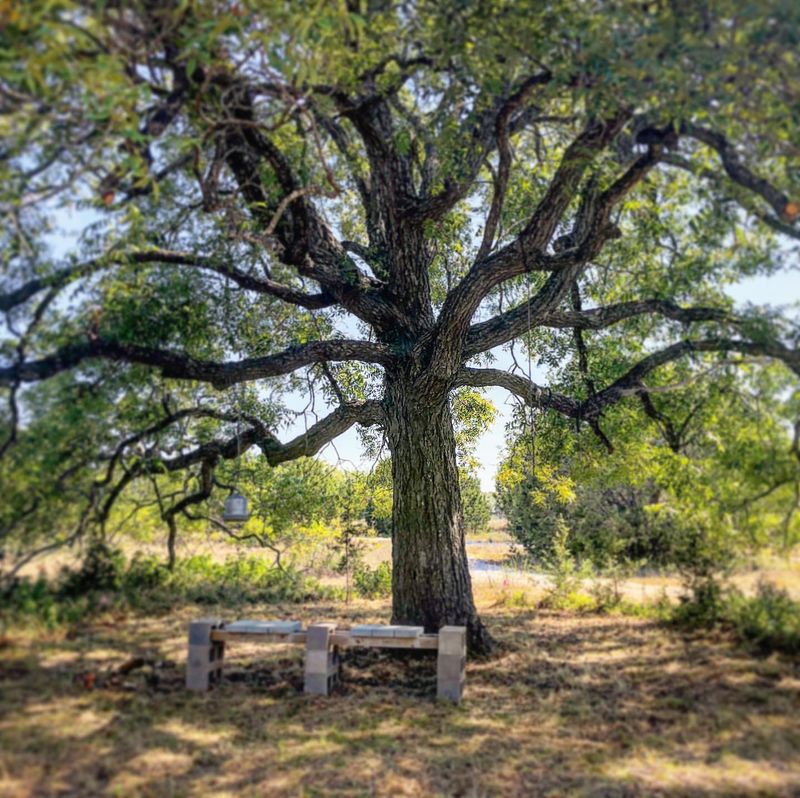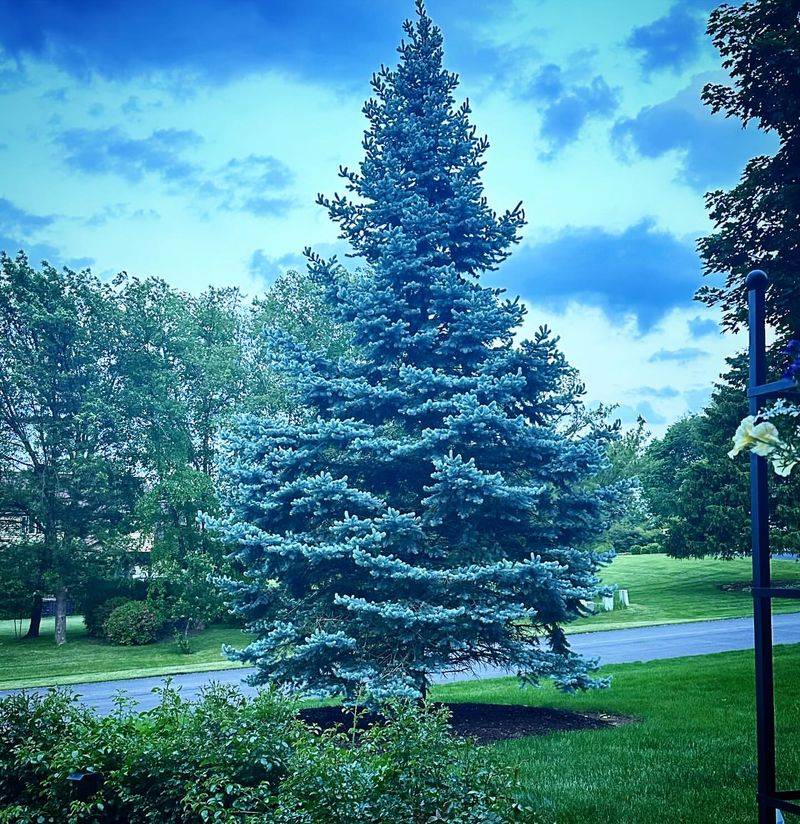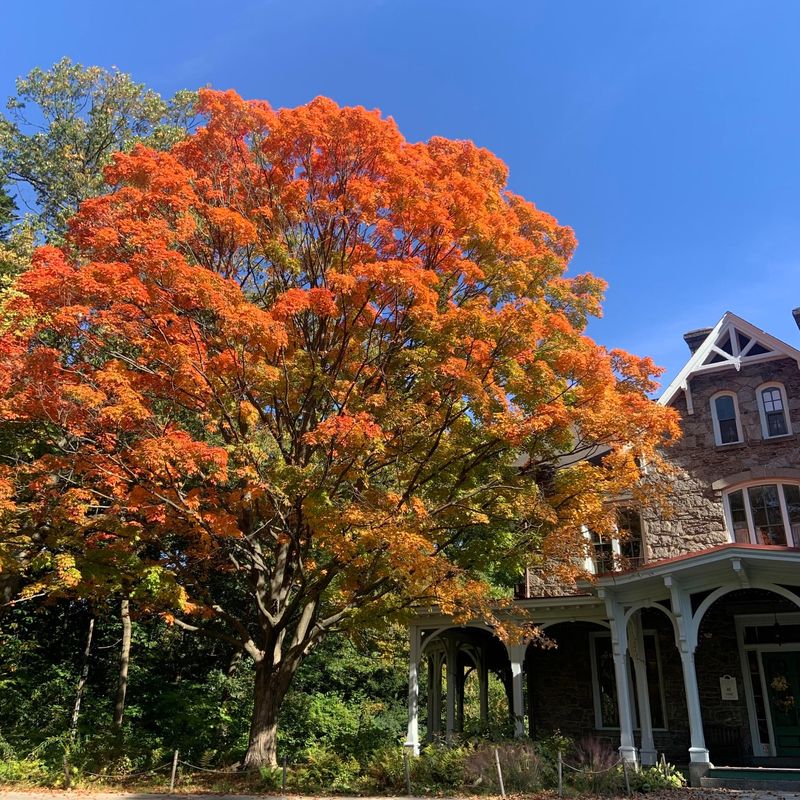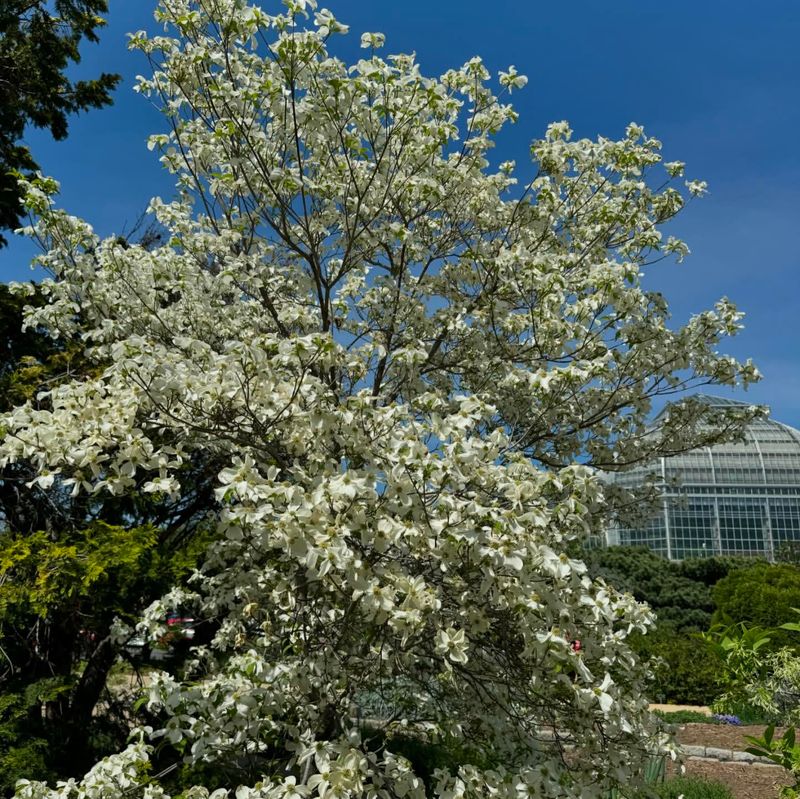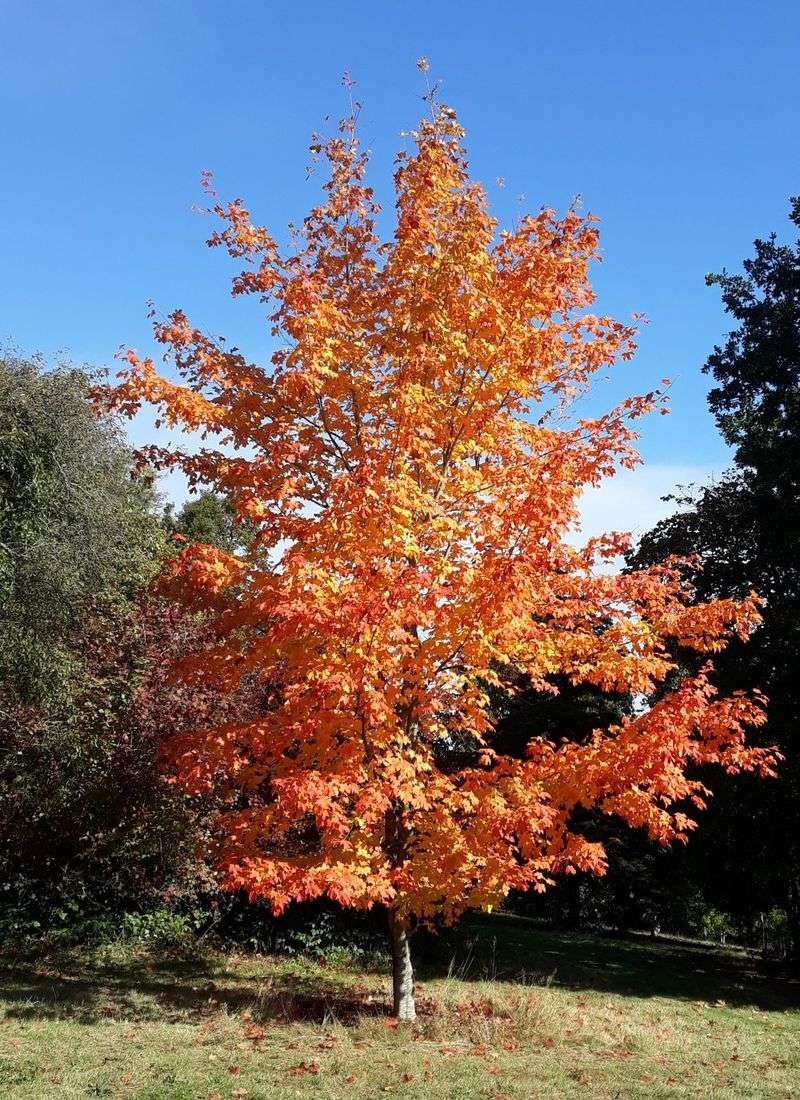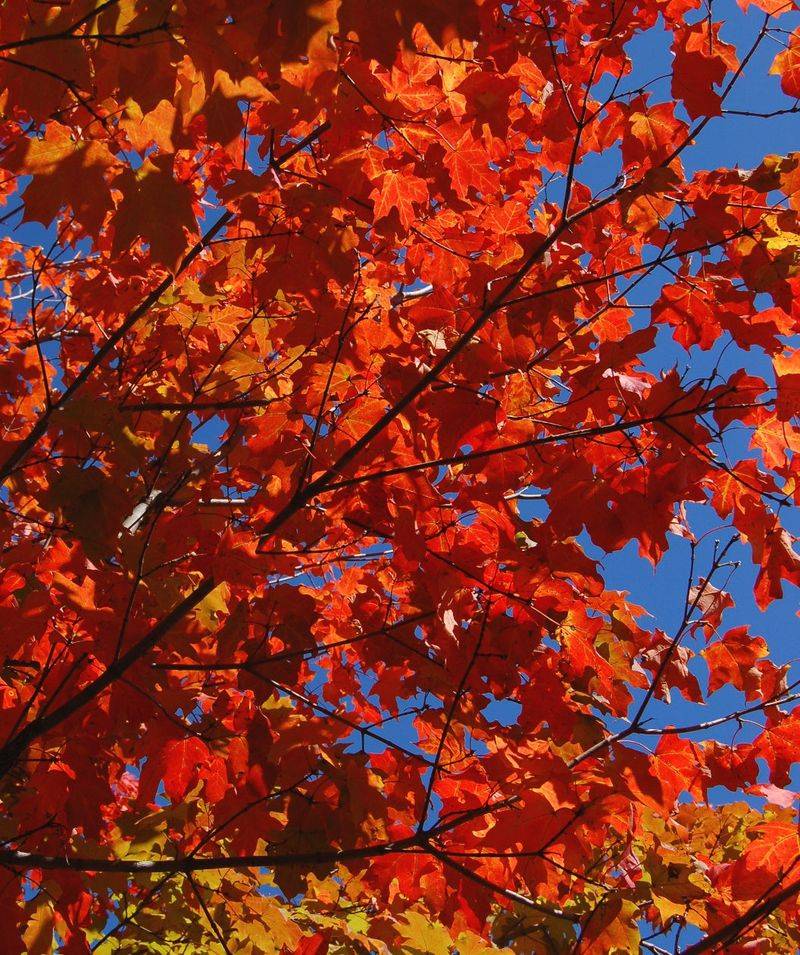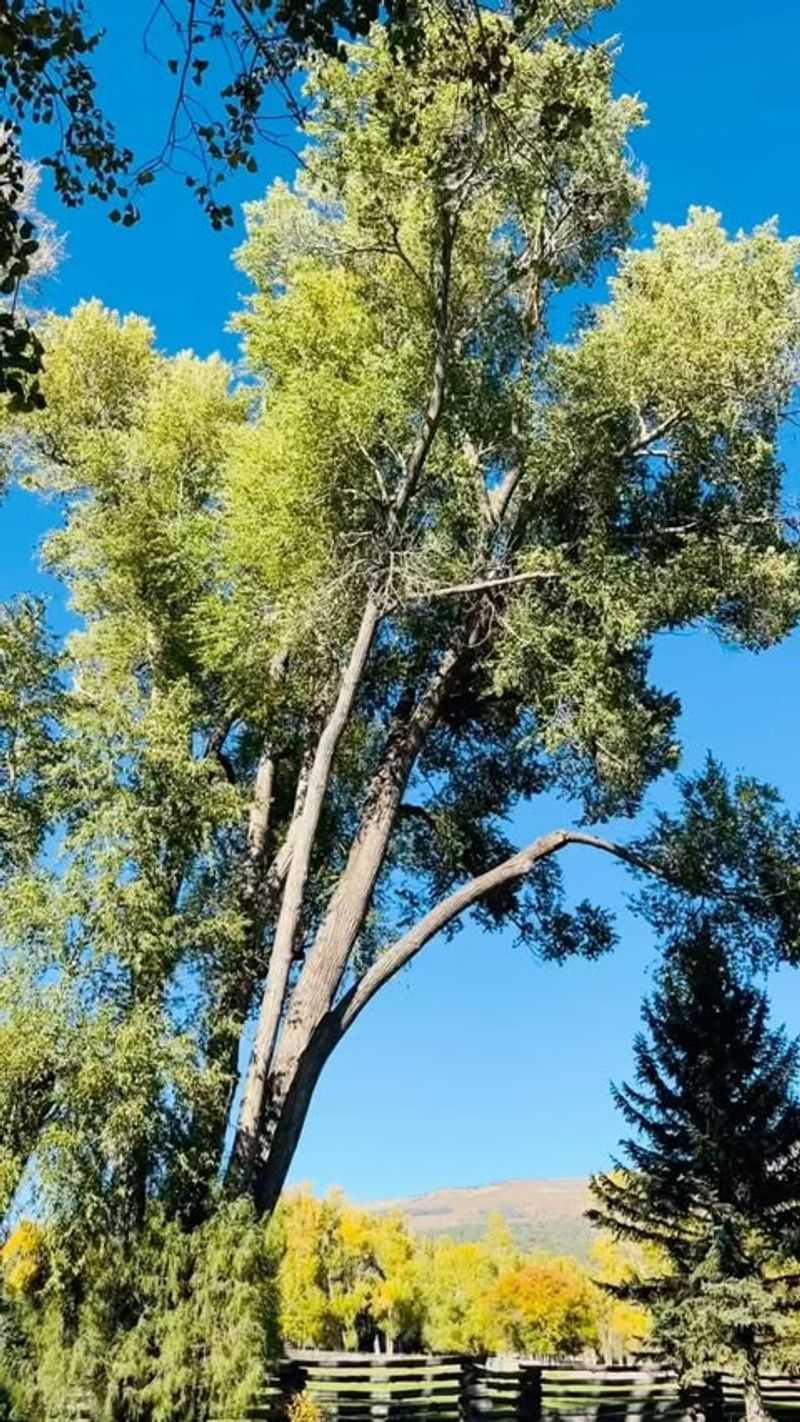Explore the unique charm and ecological significance of each US state’s iconic tree. From towering giants to delicate blossoms, these trees embody the spirit and natural beauty of their regions. Uncover the fascinating stories and features that make each tree a beloved symbol of its state.
1. Alabama: Southern Longleaf Pine
The Southern Longleaf Pine, standing tall and proud, is a testament to Alabama’s rich natural heritage. With its long, elegant needles swaying in the breeze, this tree is both a vital ecosystem and a symbol of resilience.
In the heart of Alabama, the Longleaf Pine thrives in sandy, well-drained soils, providing habitat for countless species. Its distinctive presence is more than just scenic; it’s a crucial part of the state’s biodiversity.
Cherished for its beauty and ecological role, the Longleaf Pine represents the enduring spirit of Alabama’s wilderness.
2. Alaska: Sitka Spruce
The Sitka Spruce, with its towering presence and strong, straight trunk, stands as a guardian of Alaska’s coastal forests. Known for its resilience to harsh winds and salt, it’s a symbol of strength.
In the lush, misty landscapes of Alaska, the Spruce plays a pivotal role, supporting diverse wildlife and contributing to the region’s unique charm. Its wood is prized for musical instruments, adding a melodic note to its legacy.
The Sitka Spruce is a testament to the rugged beauty and endurance of Alaska’s wilderness.
3. Arizona: Palo Verde
Arizona’s Palo Verde tree, with its striking green bark and bright yellow blossoms, stands as a vibrant oasis in the desert. It’s a beacon of life in the arid landscape, thriving where few others can.
The tree’s photosynthetic bark allows it to flourish, even in drought, making it a marvel of adaptation. Its blossoms bring a burst of color, attracting pollinators and delighting onlookers.
The Palo Verde is not just a tree; it’s a symbol of resilience and beauty in the stark, sun-baked expanses of Arizona.
4. Arkansas: Loblolly Pine
The Loblolly Pine, with its towering height and dense, green foliage, is a cornerstone of Arkansas’ rich forest ecosystems. Known for its rapid growth and adaptability, it’s both a natural wonder and an economic boon.
In Arkansas’ varied landscapes, the Loblolly Pine stands as a testament to nature’s resilience. Its wood is a valuable resource, contributing to the state’s thriving timber industry.
Beyond its practical uses, the Loblolly Pine is a beloved symbol of the natural beauty and resourcefulness of Arkansas.
5. California: Coast Redwood
The Coast Redwood, towering and majestic, is California’s pride, touching the sky with its lofty branches. As the tallest tree species on earth, it’s a living monument of time and history.
These giants thrive in the misty, temperate forests of California, creating a unique ecosystem that supports a variety of wildlife. Walking among them is like stepping into another world, where nature’s grandeur is on full display.
The Coast Redwood is not just a tree; it’s a symbol of California’s natural heritage and enduring beauty.
6. Colorado: Blue Spruce
The Blue Spruce, with its distinctive bluish-green needles and symmetrical shape, is Colorado’s arboreal treasure. Known for its beauty and hardiness, it’s a favorite in landscapes and gardens.
In the crisp air of the Rocky Mountains, the Blue Spruce stands resilient, adding a splash of color to the rugged terrain. Its needles, shimmering in the sunlight, create a serene and picturesque scene.
This tree is more than just a visual delight; it’s a symbol of the natural elegance and enduring spirit of Colorado’s landscapes.
7. Connecticut: Charter Oak
The Charter Oak, a symbol of freedom and resilience, holds a special place in Connecticut’s heart. This historic tree once sheltered the state’s colonial charter from British eyes.
With its sprawling branches and lush, green canopy, the Charter Oak represents strength and unity. Though the original tree no longer stands, its legacy lives on in the hearts of the people.
This iconic tree is not just a part of history; it’s a testament to the enduring spirit and independence that defines Connecticut.
8. Delaware: American Holly
The American Holly, with its glossy leaves and vibrant red berries, is Delaware’s festive emblem. This evergreen beauty is a symbol of cheer and vitality, brightening the landscape year-round.
In Delaware’s woodlands, the Holly thrives, offering shelter and food to birds and wildlife. Its striking appearance makes it a popular choice for holiday decorations, adding a touch of natural elegance.
The American Holly is more than just a holiday icon; it’s a symbol of resilience and natural beauty in Delaware’s verdant landscapes.
9. Florida: Sabal Palm
The Sabal Palm, with its fan-like fronds and sturdy trunk, is a symbol of Florida’s tropical charm. Known for its resilience and grace, it’s a quintessential feature of the state’s landscape.
Thriving in Florida’s warm and humid climate, the Sabal Palm provides shade and beauty to beaches and cities alike. Its iconic silhouette is a reminder of leisurely days under the sun.
Beyond its picturesque appeal, the Sabal Palm is a testament to the enduring spirit and natural beauty of Florida’s coastal regions.
10. Georgia: Southern Live Oak
The Southern Live Oak, with its sprawling branches and cascading Spanish moss, is a defining feature of Georgia’s charming landscapes. Known for its strength and endurance, it’s a symbol of the Old South.
This majestic tree provides shelter and shade, creating a welcoming habitat for diverse wildlife. Its thick, gnarled branches tell tales of centuries past, adding to its mystique.
The Southern Live Oak is not just a tree; it’s a living testament to Georgia’s rich history and natural beauty.
11. Hawaii: Kukui Tree
The Kukui Tree, with its glossy leaves and bright flowers, is a symbol of light and enlightenment in Hawaii. Known as the state tree, it holds cultural and historical significance.
In Hawaii’s lush landscapes, the Kukui thrives, its nuts once used for oil, light, and medicine. This versatile tree is celebrated in Hawaiian traditions and folklore.
Beyond its practical uses, the Kukui Tree is a symbol of the natural beauty and rich cultural heritage that defines Hawaii’s unique charm.
12. Idaho: Western White Pine
The Western White Pine, with its slender trunk and soft needles, is Idaho’s majestic arboreal icon. Known for its height and elegance, it’s a cornerstone of the state’s forested landscapes.
In the crisp mountain air of Idaho, this tree stands resilient, providing habitat for wildlife and adding beauty to the wilderness. Its wood is prized for quality, contributing to local industries.
The Western White Pine is more than just a tree; it’s a symbol of Idaho’s natural splendor and enduring ecological legacy.
13. Illinois: White Oak
The White Oak, with its wide-spreading branches and sturdy trunk, is Illinois’ stately emblem. Known for its strength and longevity, it stands as a symbol of endurance and fortitude.
In Illinois’ verdant landscapes, the White Oak provides shelter and sustenance to countless species. Its acorns, a vital food source, support a rich array of wildlife.
This tree is not just a part of the scenery; it’s a living testament to the natural beauty and enduring spirit of Illinois.
14. Indiana: Tulip Tree
The Tulip Tree, with its distinctive flowers and tall, straight trunk, is Indiana’s arboreal pride. Known for its beauty and grandeur, it stands as a symbol of elegance and strength.
In Indiana’s lush woodlands, the Tulip Tree blooms with vibrant flowers, attracting pollinators and adding charm to the landscape. Its wood, valued for its quality, supports local industries.
This tree is more than just a visual delight; it’s a testament to Indiana’s natural beauty and enduring ecological richness.
15. Iowa: Bur Oak
The Bur Oak, with its massive trunk and sprawling branches, is a symbol of strength and resilience in Iowa. Known for its longevity, it thrives in the state’s diverse landscapes.
In Iowa’s open fields and woodlands, the Bur Oak provides vital habitat and food for wildlife. Its acorns are a key food source for many species, supporting ecological balance.
This tree is more than just a part of the landscape; it’s a testament to Iowa’s natural beauty and enduring spirit.
16. Kansas: Cottonwood
The Cottonwood, with its broad leaves and towering presence, is a symbol of vitality and growth in Kansas. Known for its rapid growth and adaptability, it’s a cornerstone of the prairie landscape.
In the open prairies of Kansas, the Cottonwood stands resilient, providing shade and shelter to wildlife. Its rustling leaves create a symphony in the breeze, adding to the serene beauty.
This tree is not just a part of the scenery; it’s a testament to the enduring spirit and natural beauty of Kansas.
17. Kentucky: Tulip Poplar
The Tulip Poplar, with its towering height and distinctive flowers, is Kentucky’s arboreal jewel. Known for its beauty and grace, it stands as a symbol of elegance and strength.
In Kentucky’s lush landscapes, the Tulip Poplar blooms with vibrant flowers, attracting pollinators and adding charm to the scenery. Its wood, valued for its quality, supports local industries.
This tree is more than just a visual delight; it’s a testament to Kentucky’s natural beauty and ecological richness.
18. Louisiana: Bald Cypress
The Bald Cypress, with its gnarled roots and moss-draped branches, is a symbol of mystery and endurance in Louisiana. Known for its resilience, it thrives in the state’s swampy landscapes.
In the haunting beauty of Louisiana’s swamps, this tree provides habitat and shelter for diverse wildlife. Its presence adds a touch of mystique to the waterlogged scenery.
This tree is more than just a part of the landscape; it’s a testament to Louisiana’s natural beauty and enduring spirit.
19. Maine: Eastern White Pine
The Eastern White Pine, with its towering presence and soft needles, is a symbol of Maine’s rugged beauty. Known for its height and elegance, it stands as a testament to nature’s grandeur.
In Maine’s coastal forests, the White Pine thrives, providing habitat and contributing to the region’s unique charm. Its wood is valued for quality, supporting local industries.
This tree is more than just a part of the scenery; it’s a symbol of Maine’s natural splendor and enduring ecological legacy.
20. Maryland: White Oak
The White Oak, with its wide branches and sturdy trunk, is a symbol of strength and endurance in Maryland. Known for its longevity, it thrives in the state’s diverse landscapes.
In Maryland’s verdant settings, the White Oak provides shelter and sustenance to countless species. Its acorns, a vital food source, support a rich array of wildlife.
This tree is not just a part of the scenery; it’s a testament to the natural beauty and enduring spirit of Maryland.
21. Massachusetts: American Elm
The American Elm, with its graceful arching branches, is a symbol of elegance and strength in Massachusetts. Known for its beauty, it thrives in the state’s historic landscapes.
In Massachusetts’ quaint towns, the Elm provides shade and adds charm to the streetscapes. Its presence is a reminder of the state’s rich history and natural beauty.
This tree is not just a part of the scenery; it’s a testament to the enduring spirit and cultural heritage of Massachusetts.
22. Michigan: Eastern White Pine
The Eastern White Pine, with its towering presence and soft needles, is Michigan’s arboreal pride. Known for its height and elegance, it stands as a symbol of natural grandeur.
In Michigan’s lush forests, the White Pine thrives, providing habitat and adding beauty to the landscape. Its wood is valued for quality, supporting local industries.
This tree is more than just a visual delight; it’s a testament to Michigan’s natural beauty and ecological richness.
23. Minnesota: Norway Pine
The Norway Pine, with its towering height and dense foliage, is Minnesota’s arboreal symbol. Known for its strength and beauty, it stands as a testament to nature’s resilience.
In the pristine landscapes of Minnesota, the Pine provides habitat and adds beauty to the scenery. Its wood is valued for quality, supporting local industries.
This tree is more than just a part of the landscape; it’s a testament to Minnesota’s natural beauty and enduring spirit.
24. Mississippi: Southern Magnolia
The Southern Magnolia, with its large, fragrant flowers and glossy leaves, is Mississippi’s floral icon. Known for its beauty and grace, it stands as a symbol of southern charm.
In Mississippi’s warm, humid landscapes, the Magnolia blooms with elegance, attracting pollinators and adding charm to the scenery. Its presence is a reminder of the state’s rich natural beauty.
This tree is more than just a visual delight; it’s a testament to Mississippi’s cultural heritage and enduring spirit.
25. Missouri: Flowering Dogwood
The Flowering Dogwood, with its delicate white blossoms, is Missouri’s arboreal gem. Known for its beauty and charm, it stands as a symbol of renewal and hope.
In Missouri’s rolling hills, the Dogwood blooms with grace, attracting pollinators and adding beauty to the landscape. Its presence is a reminder of the state’s natural charm.
This tree is more than just a part of the scenery; it’s a testament to Missouri’s natural beauty and enduring spirit.
26. Montana: Ponderosa Pine
The Ponderosa Pine, with its thick, rugged trunk and long needles, is a symbol of strength and endurance in Montana. Known for its resilience, it thrives in the state’s diverse landscapes.
In Montana’s vast expanses, the Pine provides habitat and adds beauty to the scenery. Its wood is valued for quality, supporting local industries.
This tree is more than just a part of the landscape; it’s a testament to Montana’s natural beauty and enduring spirit.
27. Nebraska: Eastern Cottonwood
The Eastern Cottonwood, with its broad leaves and towering presence, is a symbol of vitality and growth in Nebraska. Known for its rapid growth, it thrives in the state’s open landscapes.
In Nebraska’s wide prairies, the Cottonwood provides shade and shelter to wildlife. Its rustling leaves create a soothing sound, adding to the serene beauty.
This tree is more than just a part of the scenery; it’s a testament to the enduring spirit and natural beauty of Nebraska.
28. Nevada: Singleleaf Pinyon Pine
The Singleleaf Pinyon Pine, with its twisted branches and dense foliage, is a symbol of resilience and endurance in Nevada. Known for its adaptability, it thrives in the state’s arid landscapes.
In Nevada’s rugged terrain, the Pine provides habitat and adds beauty to the scenery. Its seeds are a valuable food source for wildlife, supporting ecological balance.
This tree is more than just a part of the landscape; it’s a testament to Nevada’s natural beauty and enduring spirit.
29. New Hampshire: White Birch
The White Birch, with its distinctive bark and delicate leaves, is a symbol of elegance and resilience in New Hampshire. Known for its beauty, it thrives in the state’s picturesque landscapes.
In New Hampshire’s lush forests, the Birch provides habitat and adds charm to the scenery. Its presence is a reminder of the state’s natural beauty and cultural heritage.
This tree is more than just a part of the landscape; it’s a testament to New Hampshire’s enduring spirit and ecological richness.
30. New Jersey: Northern Red Oak
The Northern Red Oak, with its broad canopy and vibrant foliage, is New Jersey’s arboreal pride. Known for its strength and beauty, it stands as a symbol of endurance and vitality.
In New Jersey’s diverse landscapes, the Red Oak provides shelter and sustenance to wildlife. Its acorns are a key food source, supporting ecological balance.
This tree is more than just a part of the scenery; it’s a testament to New Jersey’s natural beauty and enduring spirit.
31. New Mexico: Piñon Pine
The Piñon Pine, with its dense canopy and rugged trunk, is a symbol of resilience and adaptation in New Mexico. Known for its hardiness, it thrives in the state’s arid highlands.
In New Mexico’s rugged landscapes, the Pine provides habitat and food for wildlife. Its seeds, rich in nutrients, support a variety of animals.
This tree is more than just a part of the landscape; it’s a testament to New Mexico’s natural beauty and enduring spirit.
32. New York: Sugar Maple
The Sugar Maple, with its vibrant autumn foliage, is a symbol of beauty and abundance in New York. Known for its stunning colors, it thrives in the state’s diverse landscapes.
In New York’s historic settings, the Maple provides shade and adds charm to the scenery. Its sap is a beloved resource, turned into sweet syrup that delights many.
This tree is more than just a part of the landscape; it’s a testament to New York’s natural beauty and cultural richness.
33. North Carolina: Longleaf Pine
The Longleaf Pine, with its tall stature and long needles, is a symbol of resilience and beauty in North Carolina. Known for its ecological importance, it thrives in the state’s pine forests.
In North Carolina’s lush landscapes, the Pine provides habitat and supports biodiversity. Its presence is a reminder of the state’s natural beauty and ecological balance.
This tree is more than just a part of the landscape; it’s a testament to North Carolina’s enduring spirit and natural heritage.
34. North Dakota: American Elm
The American Elm, with its graceful arching branches, is a symbol of elegance and resilience in North Dakota. Known for its beauty, it thrives in the state’s open landscapes.
In North Dakota’s prairies, the Elm provides shade and adds charm to the scenery. Its presence is a reminder of the state’s natural beauty and cultural heritage.
This tree is more than just a part of the landscape; it’s a testament to North Dakota’s enduring spirit and ecological richness.
35. Ohio: Ohio Buckeye
The Ohio Buckeye, with its distinctive leaves and stout trunk, is a symbol of pride and resilience in Ohio. Known for its uniqueness, it thrives in the state’s varied landscapes.
In Ohio’s forests and fields, the Buckeye provides habitat and adds character to the scenery. Its nuts, though inedible, are a part of local folklore.
This tree is more than just a part of the landscape; it’s a testament to Ohio’s natural beauty and enduring spirit.
36. Oklahoma: Eastern Redbud
The Eastern Redbud, with its bright pink blossoms, is a symbol of beauty and renewal in Oklahoma. Known for its stunning spring display, it thrives in the state’s varied landscapes.
In Oklahoma’s gardens and parks, the Redbud blooms with vibrant colors, attracting pollinators and delighting onlookers. Its presence adds charm and vitality to the scenery.
This tree is more than just a part of the landscape; it’s a testament to Oklahoma’s natural beauty and enduring spirit.
37. Oregon: Douglas Fir
The Douglas Fir, with its thick bark and dense foliage, is a symbol of strength and grandeur in Oregon. Known for its towering presence, it thrives in the state’s lush landscapes.
In Oregon’s verdant forests, the Fir provides habitat and adds beauty to the scenery. Its wood is valued for quality, supporting local industries.
This tree is more than just a part of the landscape; it’s a testament to Oregon’s natural beauty and enduring spirit.
38. Pennsylvania: Eastern Hemlock
The Eastern Hemlock, with its feathery foliage and graceful form, is a symbol of elegance and resilience in Pennsylvania. Known for its beauty, it thrives in the state’s tranquil forests.
In Pennsylvania’s serene landscapes, the Hemlock provides habitat and adds charm to the scenery. Its presence is a reminder of the state’s natural beauty and cultural heritage.
This tree is more than just a part of the landscape; it’s a testament to Pennsylvania’s enduring spirit and ecological richness.
39. Rhode Island: Red Maple
The Red Maple, with its fiery foliage, is a symbol of beauty and vitality in Rhode Island. Known for its stunning colors, it thrives in the state’s picturesque landscapes.
In Rhode Island’s charming settings, the Maple provides shade and adds charm to the scenery. Its presence is a reminder of the state’s natural beauty and cultural richness.
This tree is more than just a part of the landscape; it’s a testament to Rhode Island’s enduring spirit and ecological heritage.
40. South Carolina: Sabal Palmetto
The Sabal Palmetto, with its fan-shaped fronds, is a symbol of tropical elegance in South Carolina. Known for its resilience, it thrives in the state’s sunny coastal regions.
In South Carolina’s warm climates, the Palmetto provides shade and adds beauty to the scenery. Its presence is a reminder of leisurely days by the coast.
This tree is more than just a part of the landscape; it’s a testament to South Carolina’s natural beauty and enduring spirit.
41. South Dakota: Black Hills Spruce
The Black Hills Spruce, with its dense foliage and sturdy trunk, is a symbol of strength and resilience in South Dakota. Known for its adaptability, it thrives in the state’s rugged landscapes.
In South Dakota’s diverse settings, the Spruce provides habitat and adds beauty to the scenery. Its presence is a reminder of the state’s natural beauty and ecological balance.
This tree is more than just a part of the landscape; it’s a testament to South Dakota’s enduring spirit and natural heritage.
42. Tennessee: Tulip Poplar
The Tulip Poplar, with its towering height and distinctive flowers, is Tennessee’s arboreal jewel. Known for its beauty and grace, it stands as a symbol of elegance and strength.
In Tennessee’s lush landscapes, the Tulip Poplar blooms with vibrant flowers, attracting pollinators and adding charm to the scenery. Its wood, valued for its quality, supports local industries.
This tree is more than just a visual delight; it’s a testament to Tennessee’s natural beauty and ecological richness.
43. Texas: Pecan Tree
The Pecan Tree, with its wide branches and rich foliage, is a symbol of abundance and resilience in Texas. Known for its nuts, it thrives in the state’s diverse landscapes.
In Texas’ varied settings, the Pecan provides shade and sustenance, supporting wildlife and delighting locals. Its nuts are a beloved resource, enjoyed in various culinary delights.
This tree is more than just a part of the landscape; it’s a testament to Texas’ natural beauty and cultural richness.
44. Utah: Blue Spruce
The Blue Spruce, with its distinctive bluish-green needles, is Utah’s arboreal treasure. Known for its beauty and hardiness, it’s a favorite in landscapes and gardens.
In the majestic mountain landscapes of Utah, the Blue Spruce stands resilient, adding a splash of color to the rugged terrain. Its needles, shimmering in the sunlight, create a serene and picturesque scene.
This tree is more than just a visual delight; it’s a symbol of the natural elegance and enduring spirit of Utah’s landscapes.
45. Vermont: Sugar Maple
The Sugar Maple, with its vibrant foliage, is Vermont’s arboreal pride. Known for its stunning autumn colors, it stands as a symbol of natural beauty and bounty.
In Vermont’s scenic landscapes, the Maple paints a picturesque scene, attracting visitors and delighting locals. Its sap, turned into syrup, is a cherished local treasure.
This tree is more than just a part of the landscape; it’s a testament to Vermont’s natural beauty and cultural richness.
46. Virginia: American Dogwood
The American Dogwood, with its delicate white blossoms, is Virginia’s floral emblem. Known for its charm and beauty, it stands as a symbol of renewal and hope.
In Virginia’s historic landscapes, the Dogwood blooms with grace, attracting pollinators and adding beauty to the scenery. Its presence is a reminder of the state’s rich cultural heritage.
This tree is more than just a part of the landscape; it’s a testament to Virginia’s natural beauty and enduring spirit.
47. Washington: Western Hemlock
The Western Hemlock, with its feathery foliage and sturdy trunk, is Washington’s arboreal pride. Known for its beauty and resilience, it thrives in the state’s lush forests.
In Washington’s verdant landscapes, the Hemlock provides habitat and adds beauty to the scenery. Its presence is a reminder of the state’s natural elegance and ecological richness.
This tree is more than just a part of the landscape; it’s a testament to Washington’s enduring spirit and natural heritage.
48. West Virginia: Sugar Maple
The Sugar Maple, with its vibrant foliage, is West Virginia’s arboreal pride. Known for its stunning autumn colors, it stands as a symbol of natural beauty and bounty.
In West Virginia’s scenic landscapes, the Maple paints a picturesque scene, attracting visitors and delighting locals. Its sap, turned into syrup, is a cherished local treasure.
This tree is more than just a part of the landscape; it’s a testament to West Virginia’s natural beauty and cultural richness.
49. Wisconsin: Sugar Maple
The Sugar Maple, with its vibrant foliage, is Wisconsin’s arboreal pride. Known for its stunning autumn colors, it stands as a symbol of natural beauty and bounty.
In Wisconsin’s scenic landscapes, the Maple paints a picturesque scene, attracting visitors and delighting locals. Its sap, turned into syrup, is a cherished local treasure.
This tree is more than just a part of the landscape; it’s a testament to Wisconsin’s natural beauty and cultural richness.
50. Wyoming: Plains Cottonwood
The Plains Cottonwood, with its towering presence and broad leaves, is a symbol of vitality and growth in Wyoming. Known for its rapid growth, it thrives in the state’s open prairies.
In Wyoming’s wide expanses, the Cottonwood provides shade and shelter to wildlife. Its rustling leaves create a soothing sound, adding to the serene beauty.
This tree is more than just a part of the scenery; it’s a testament to Wyoming’s natural beauty and enduring spirit.

